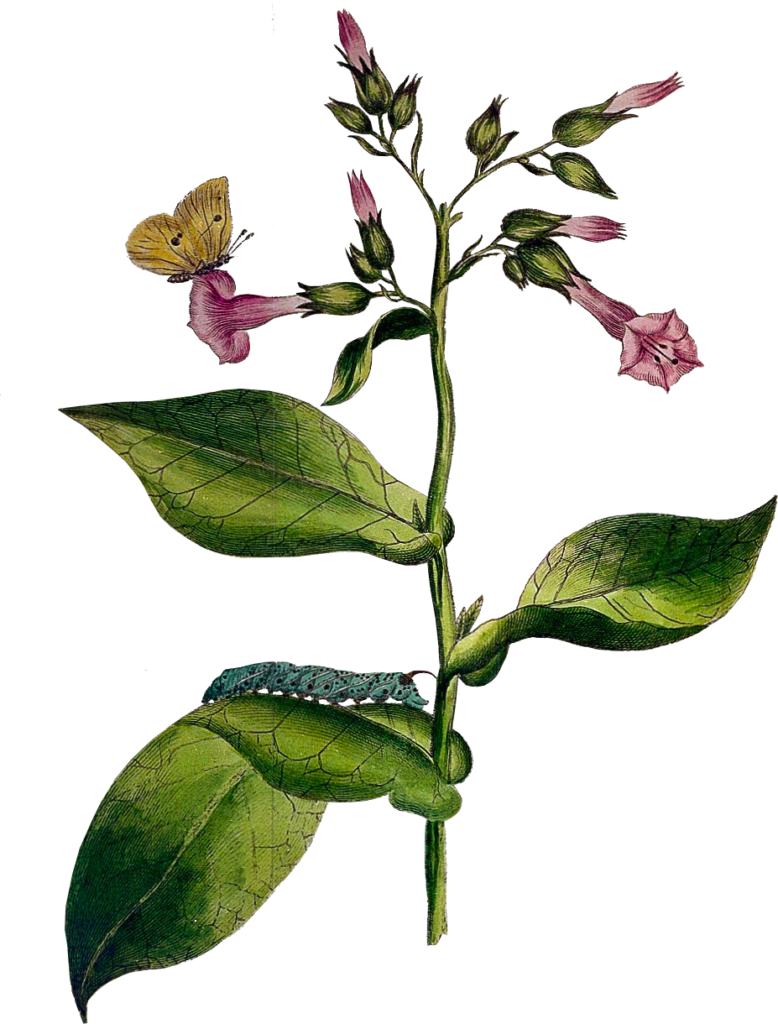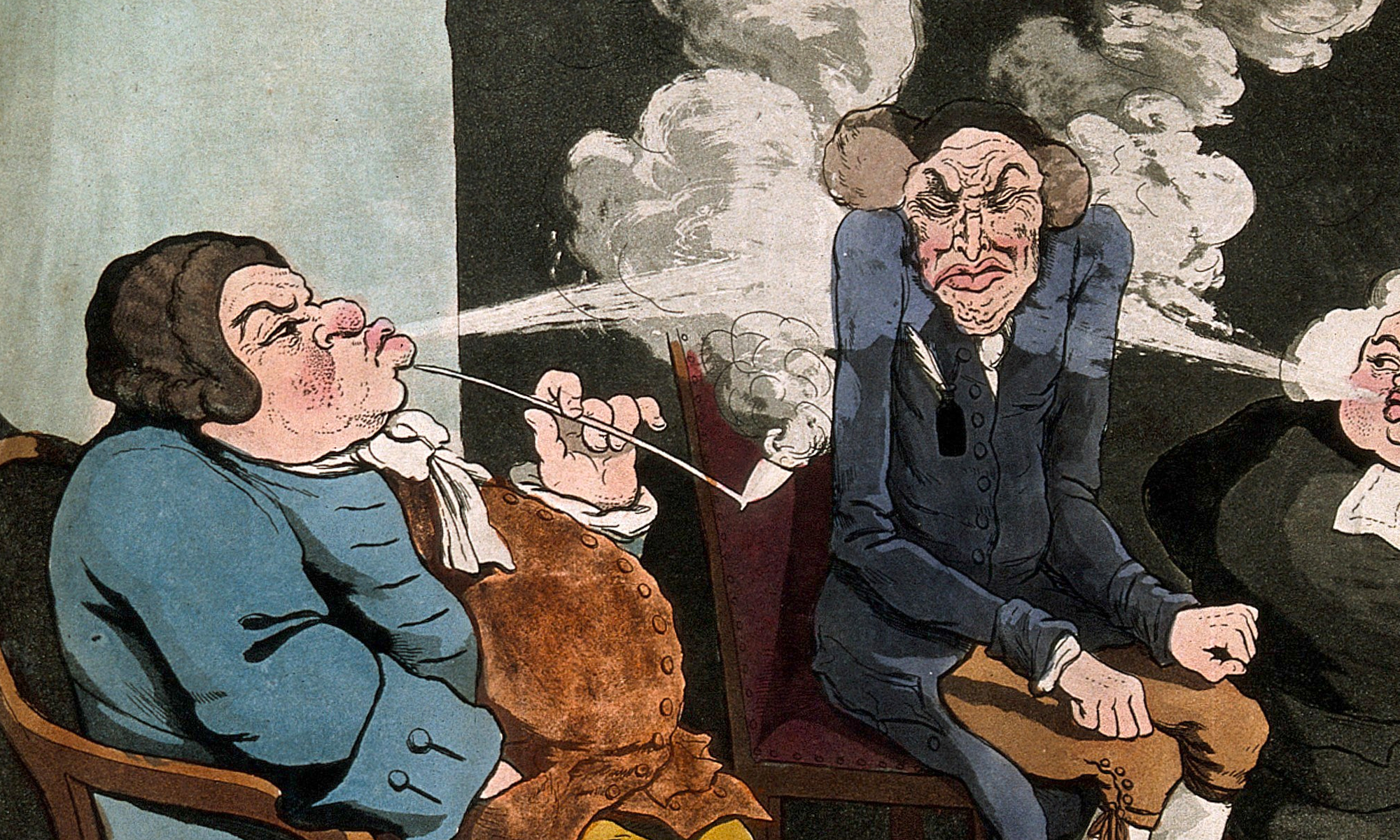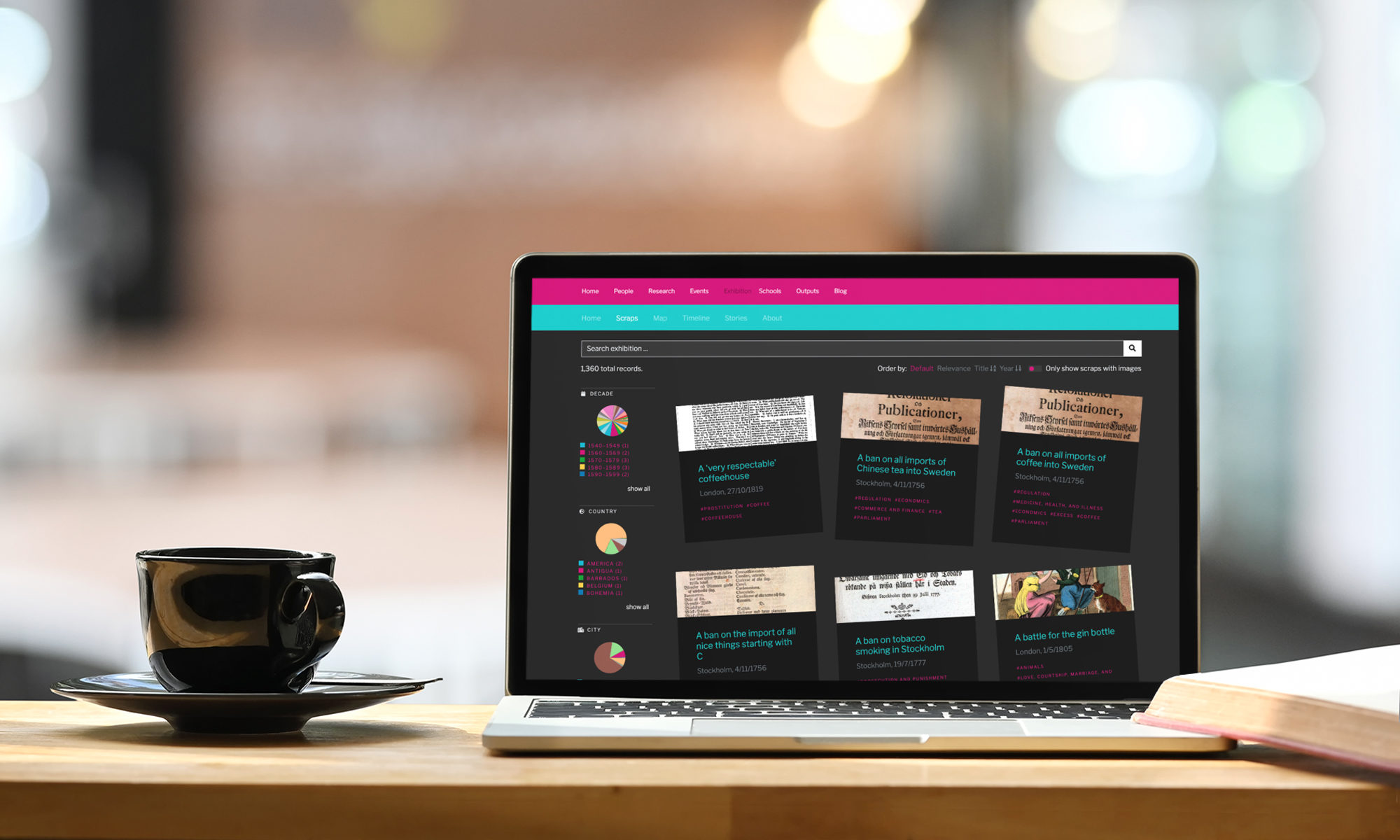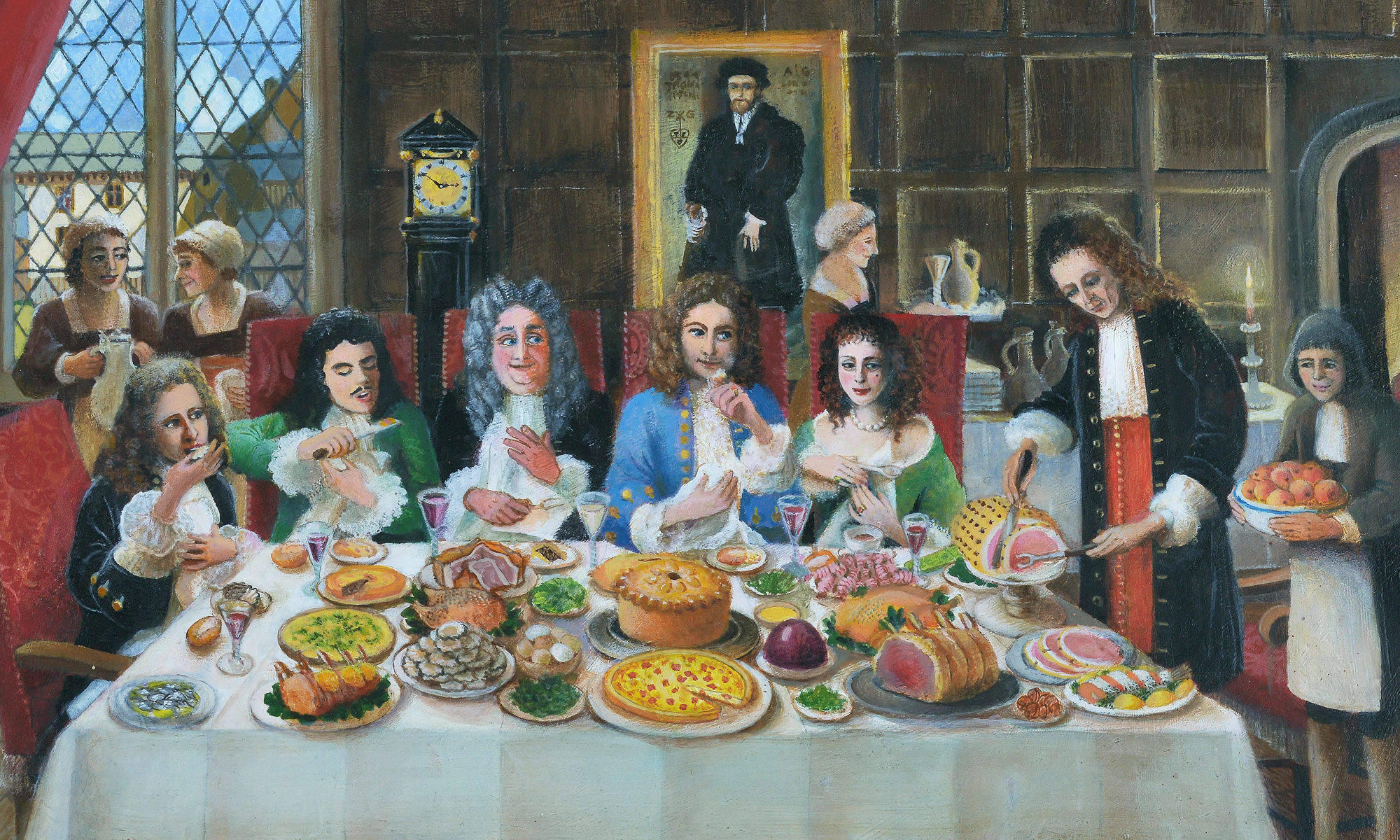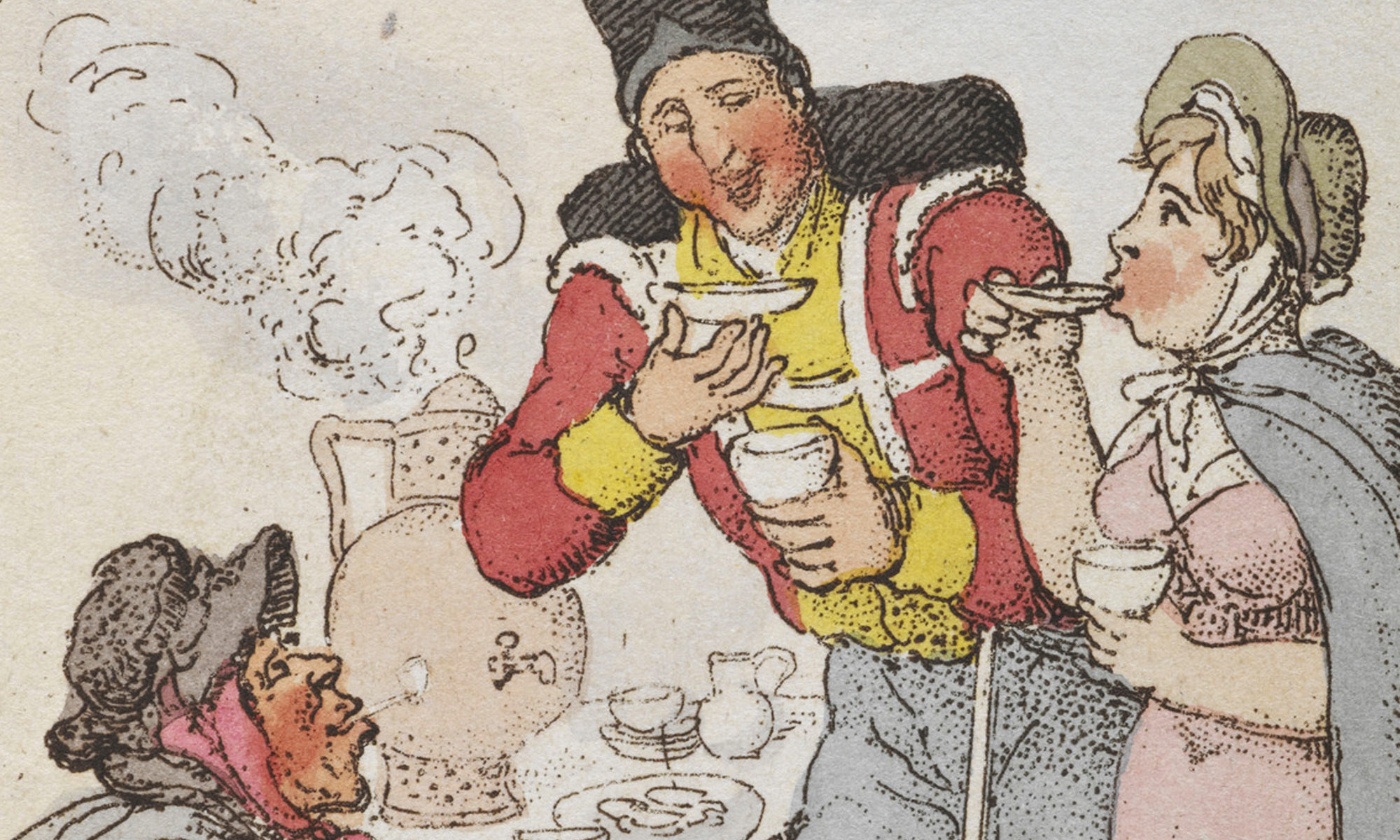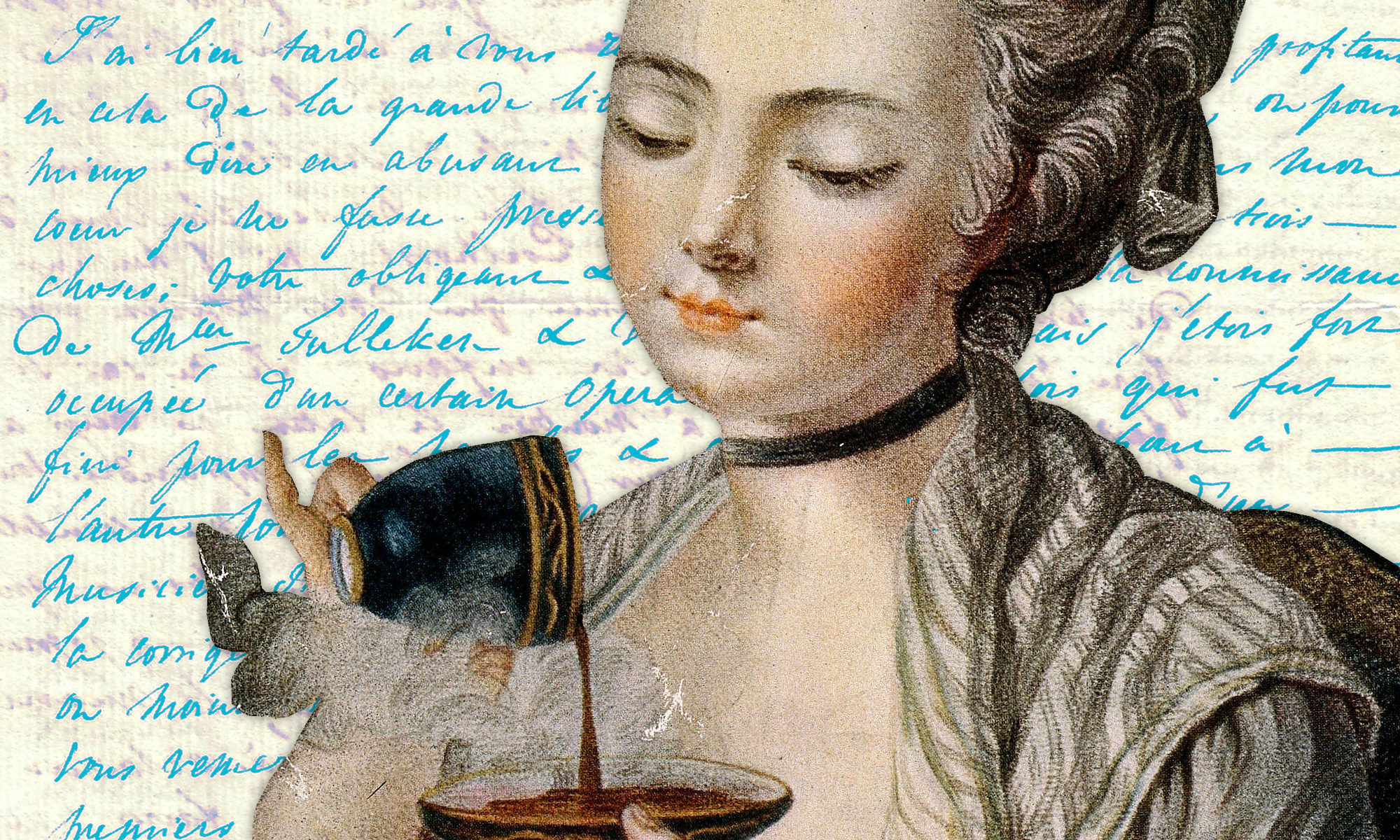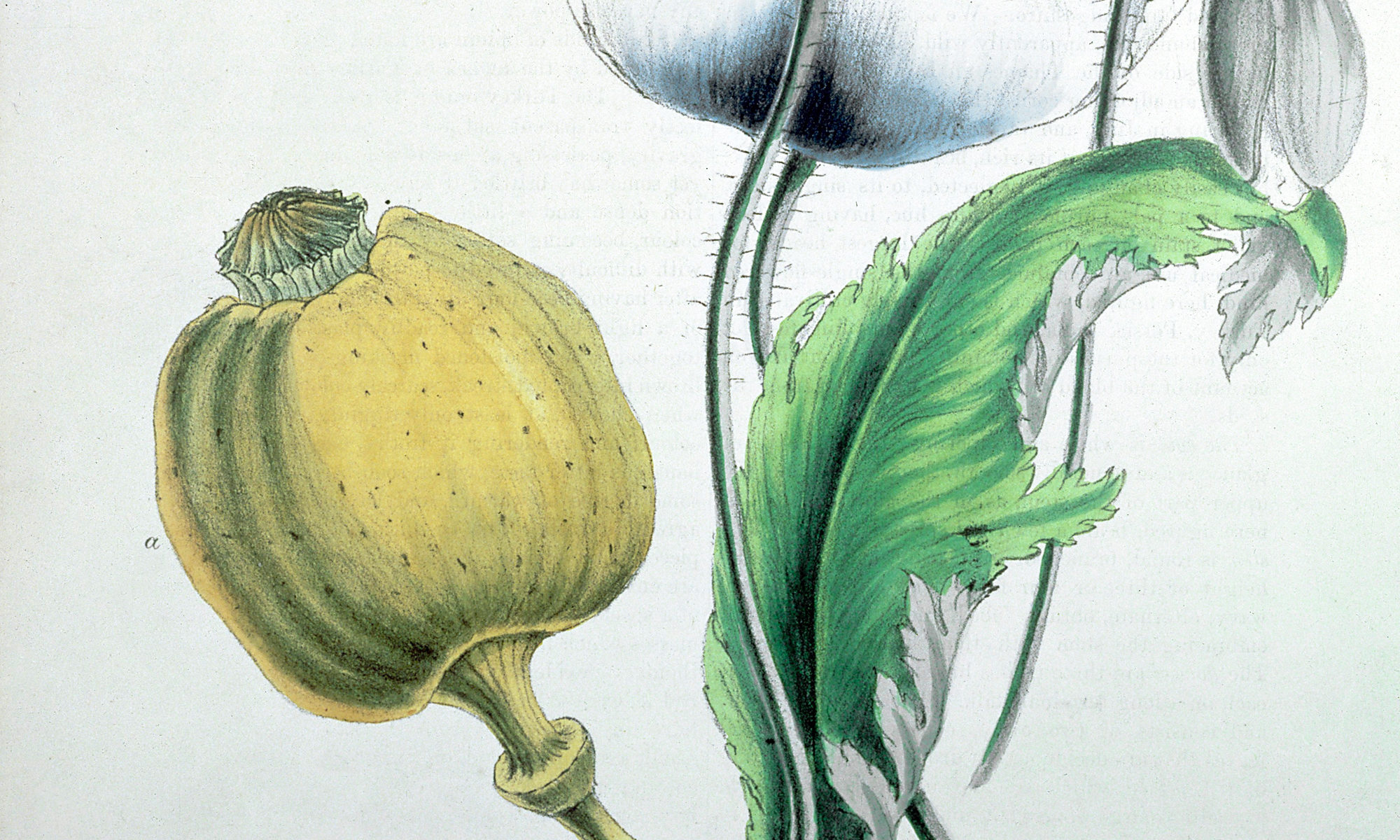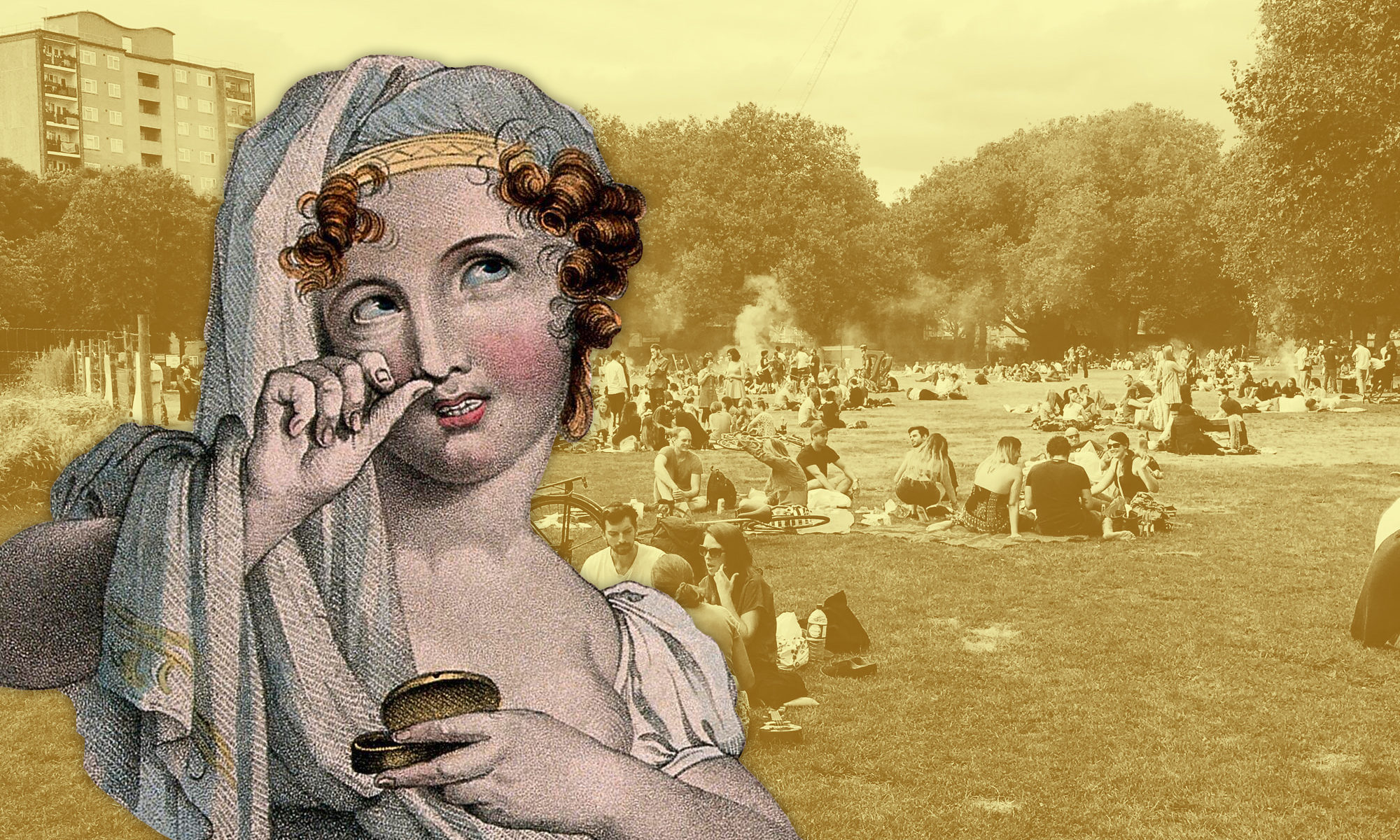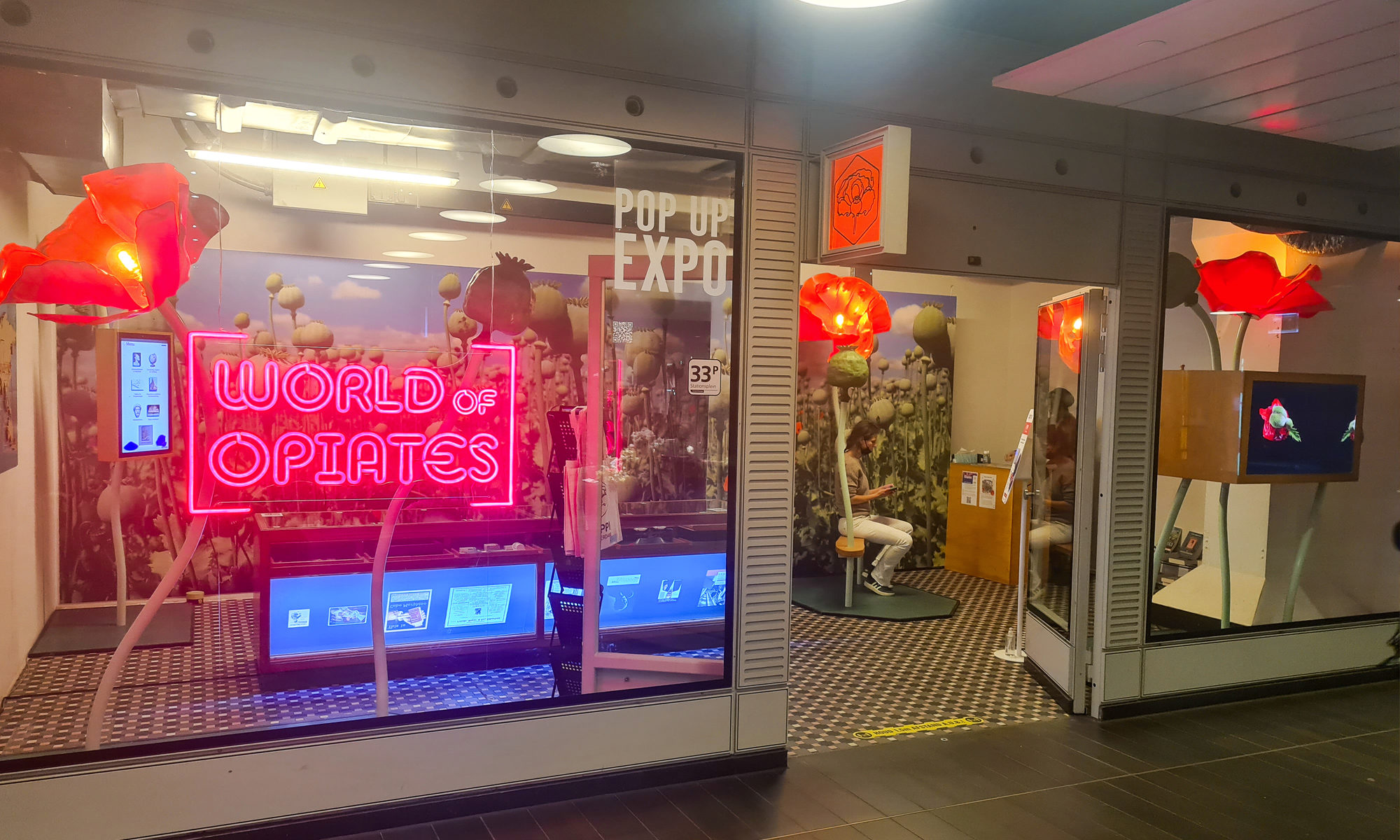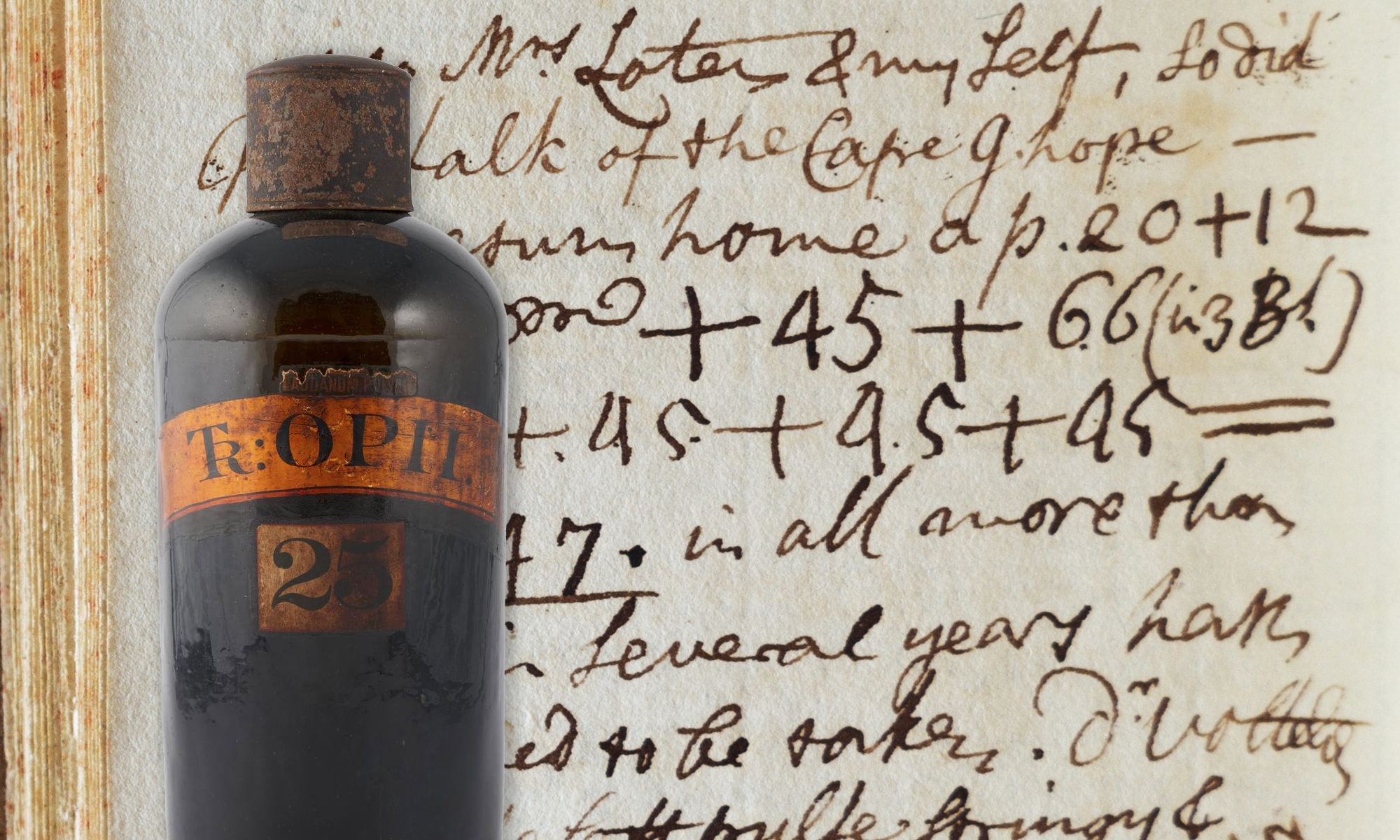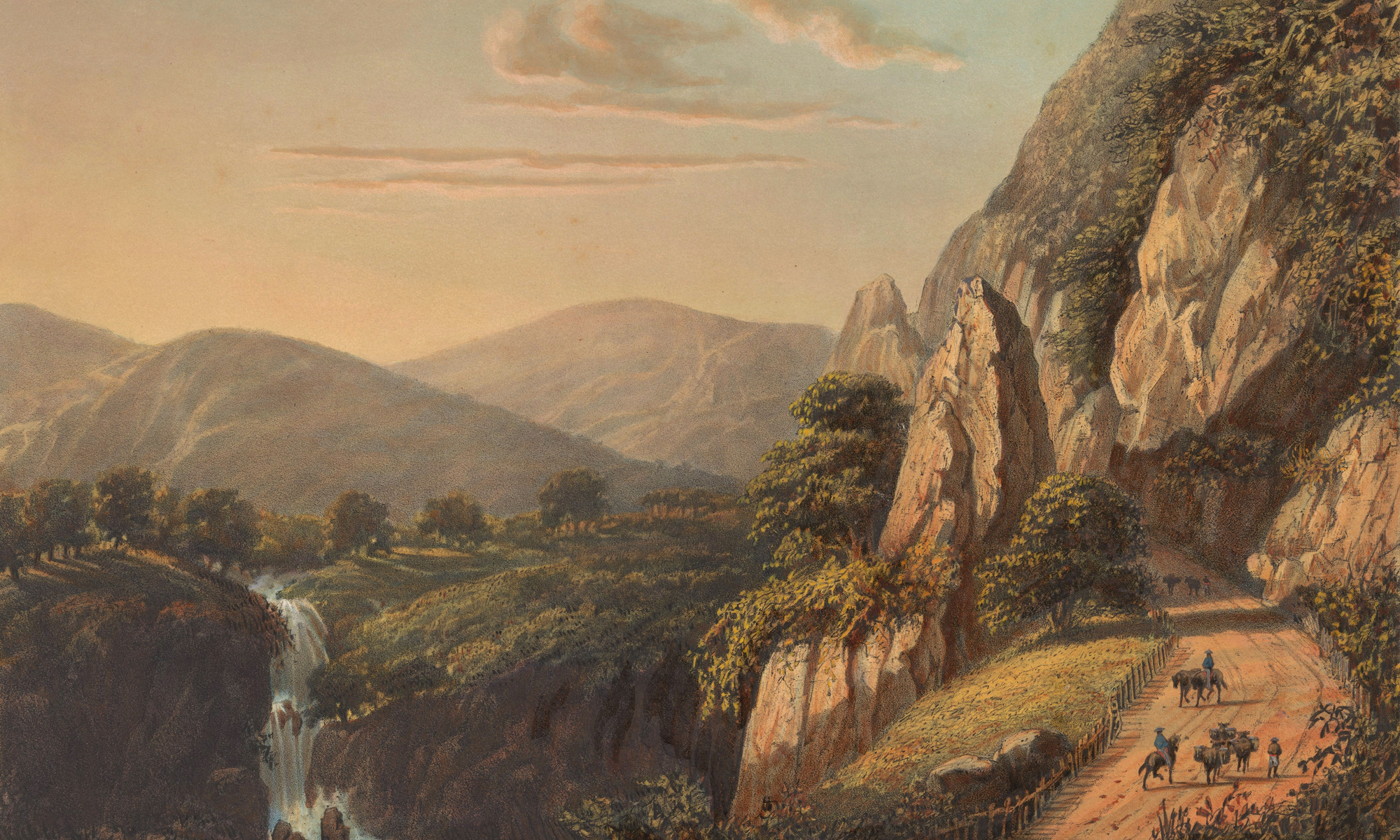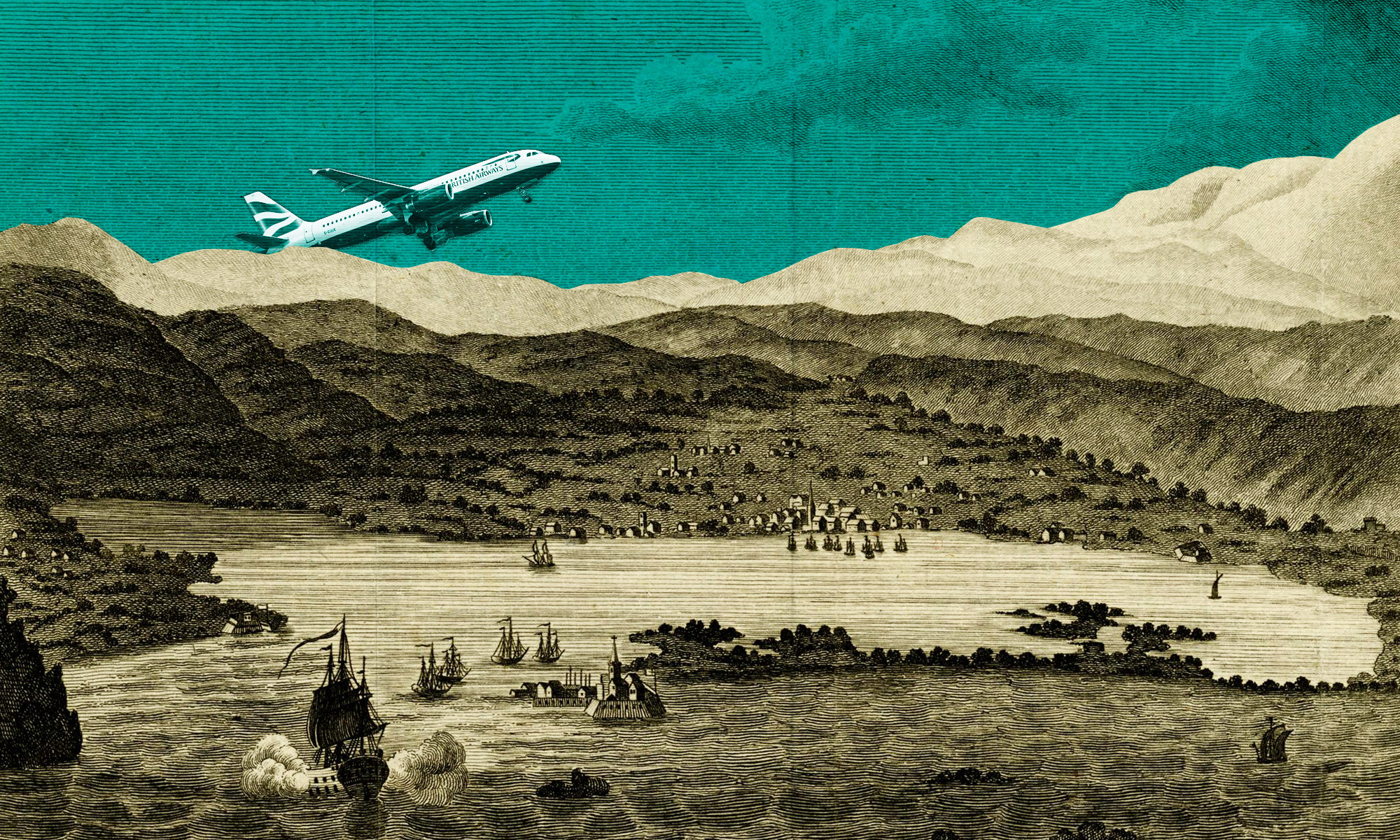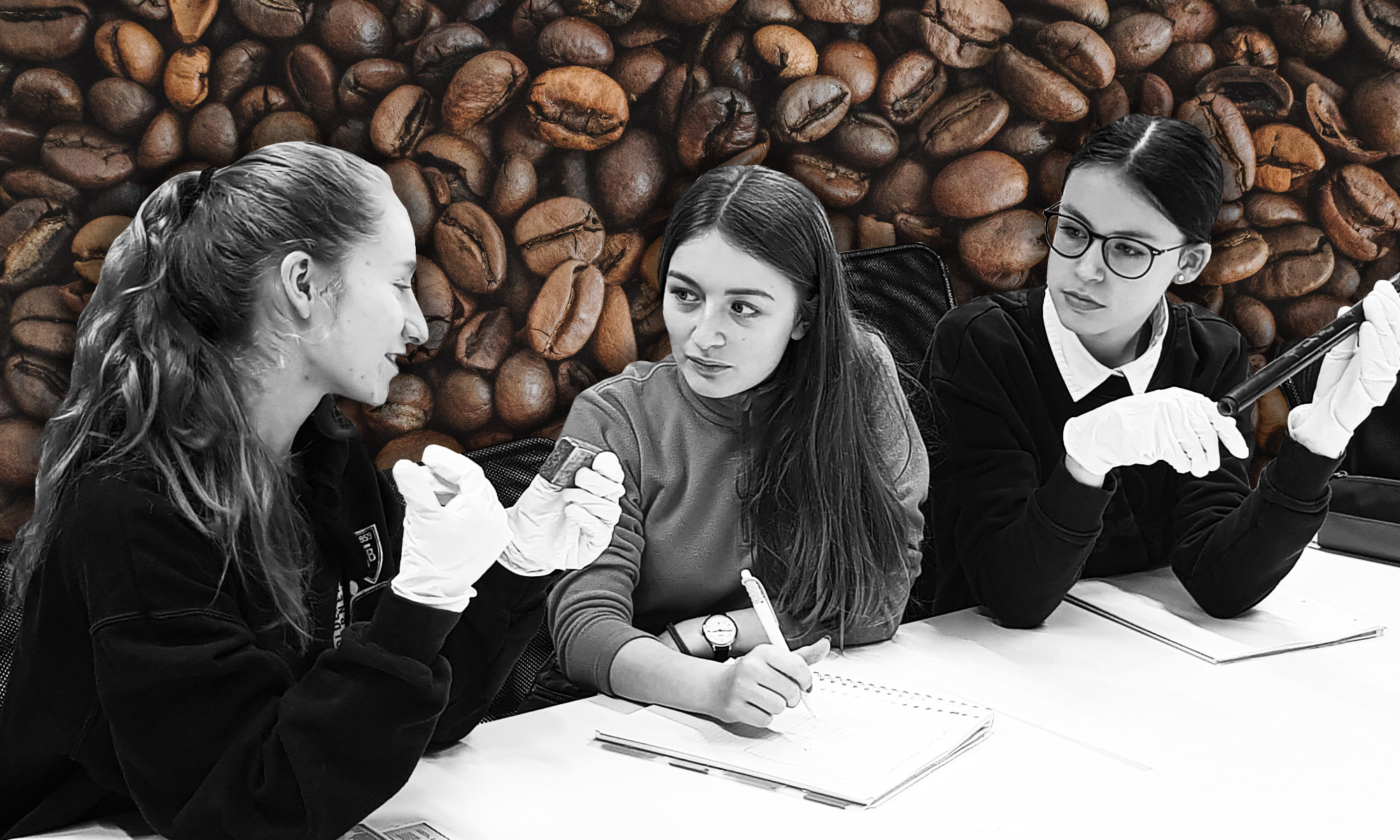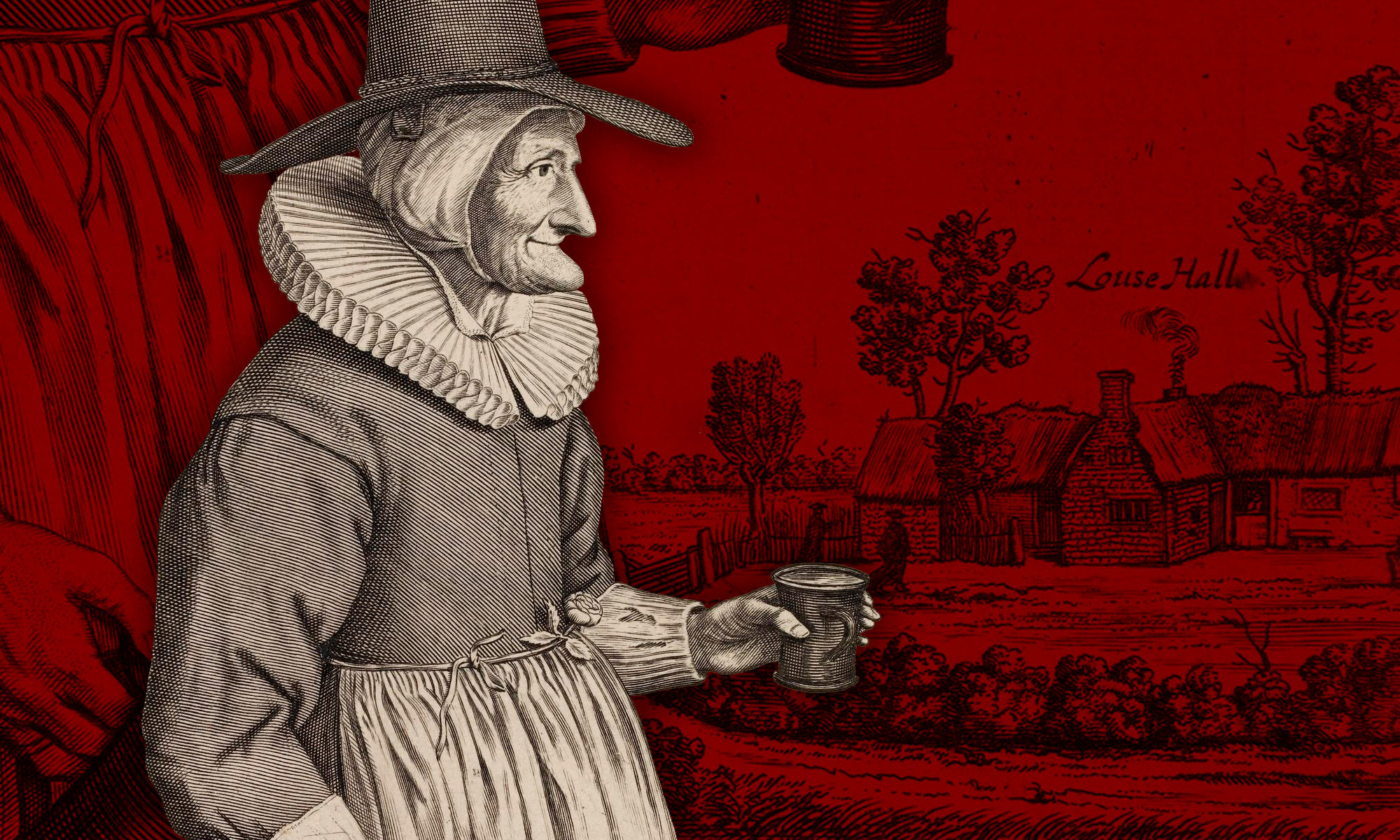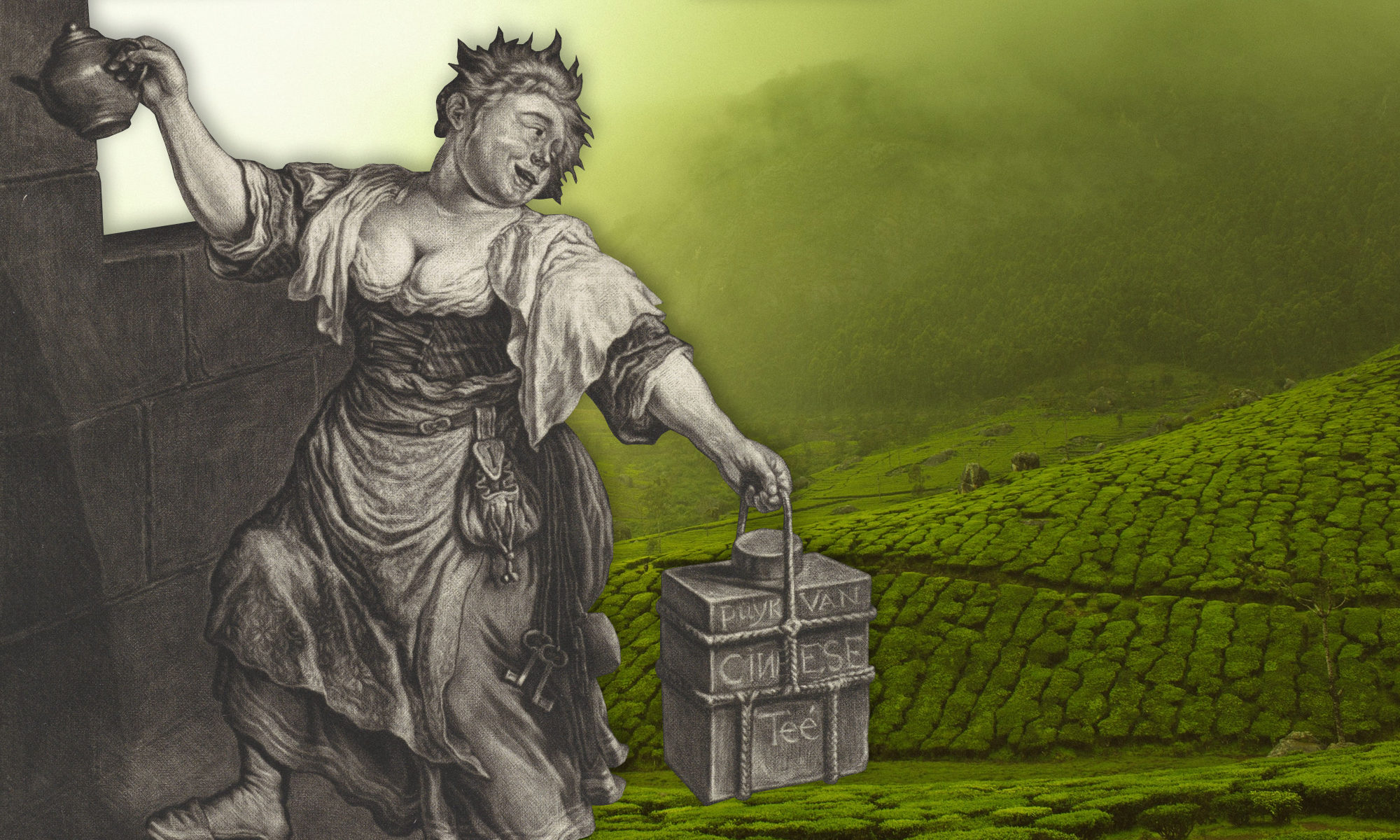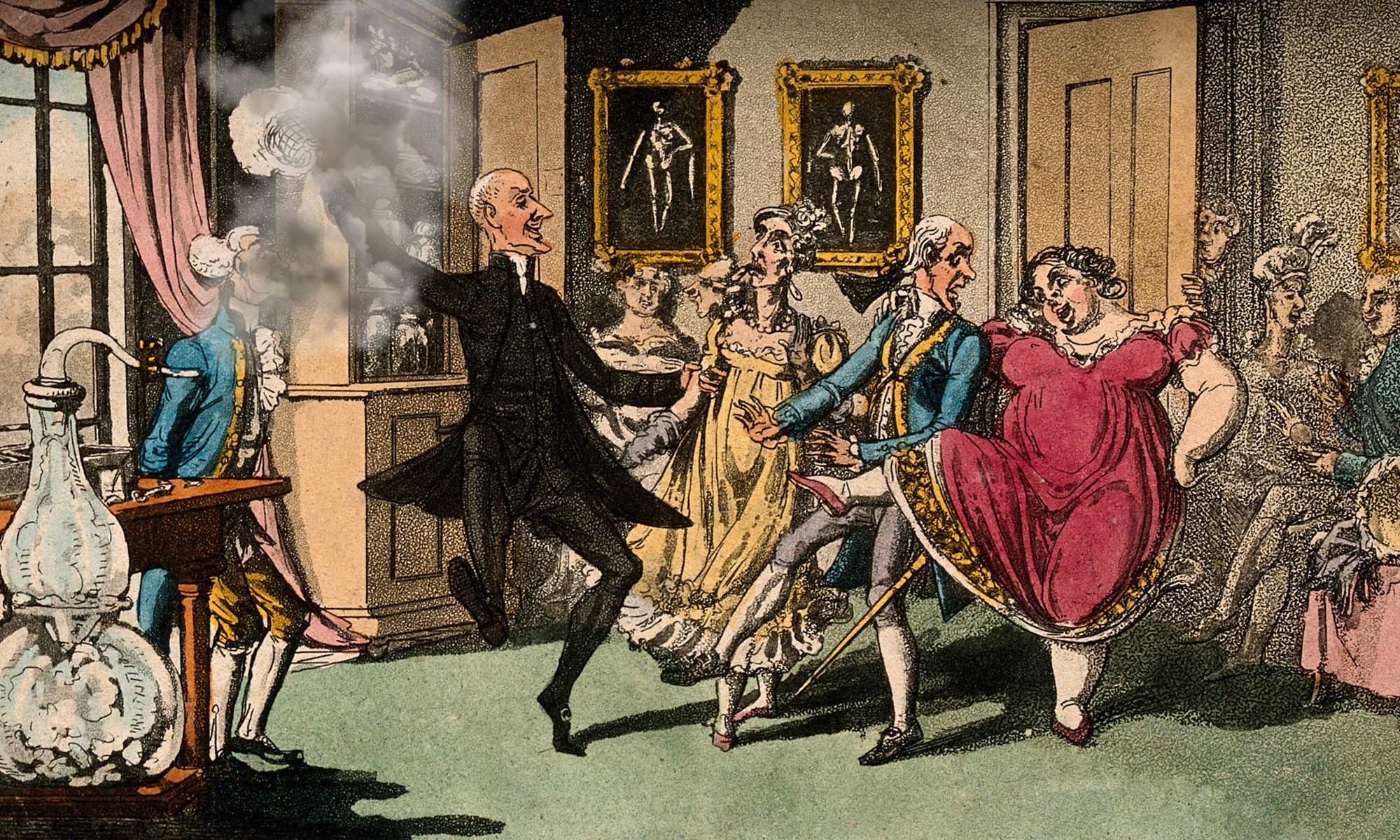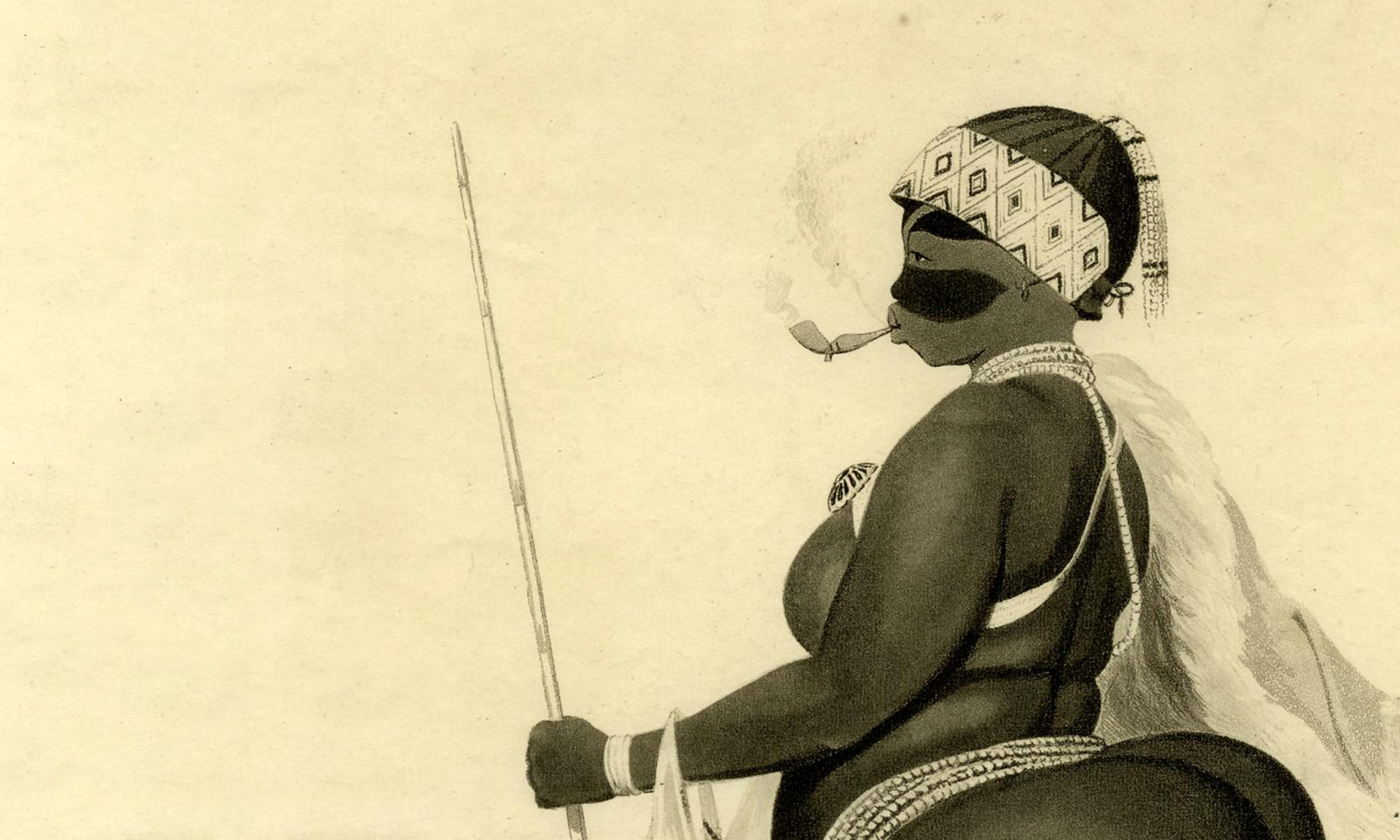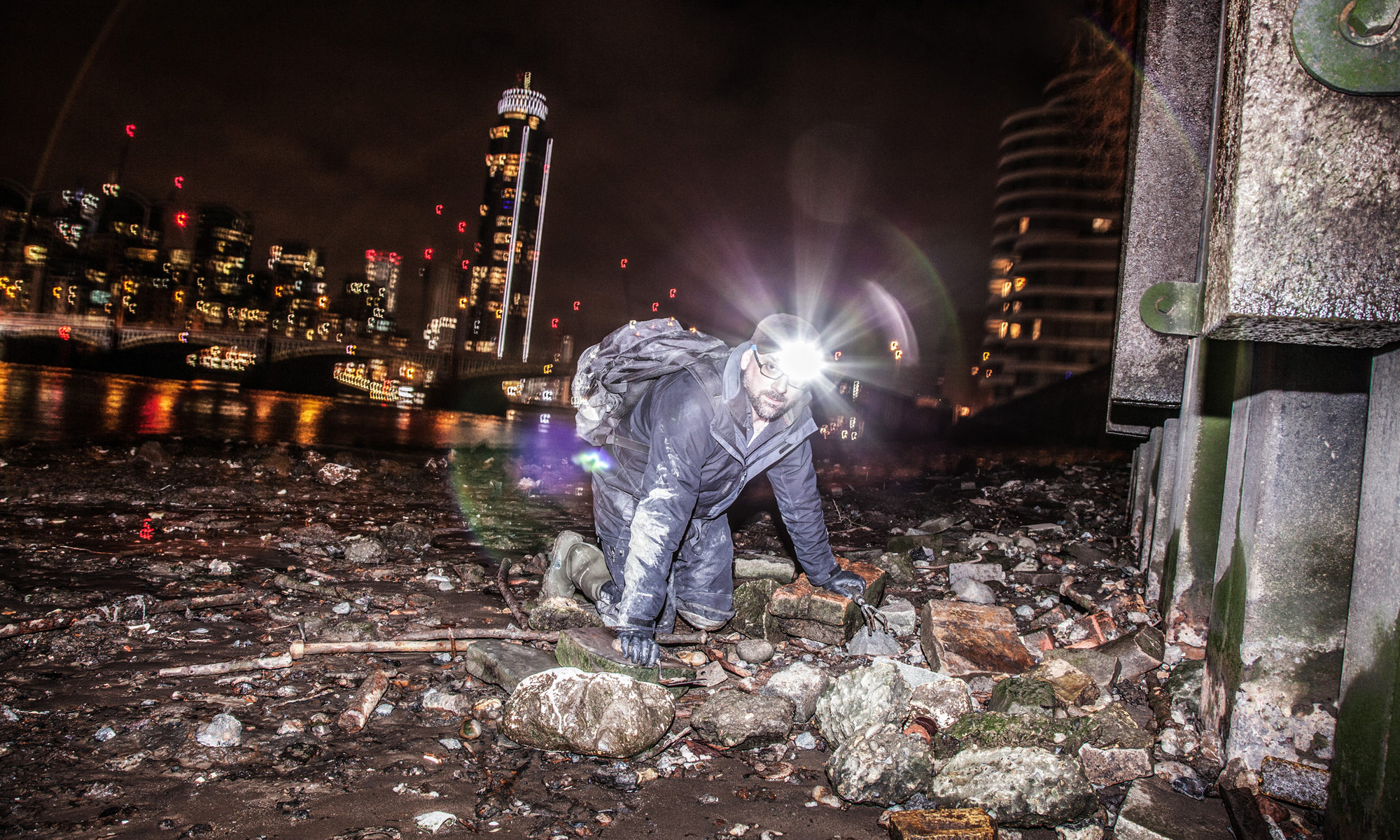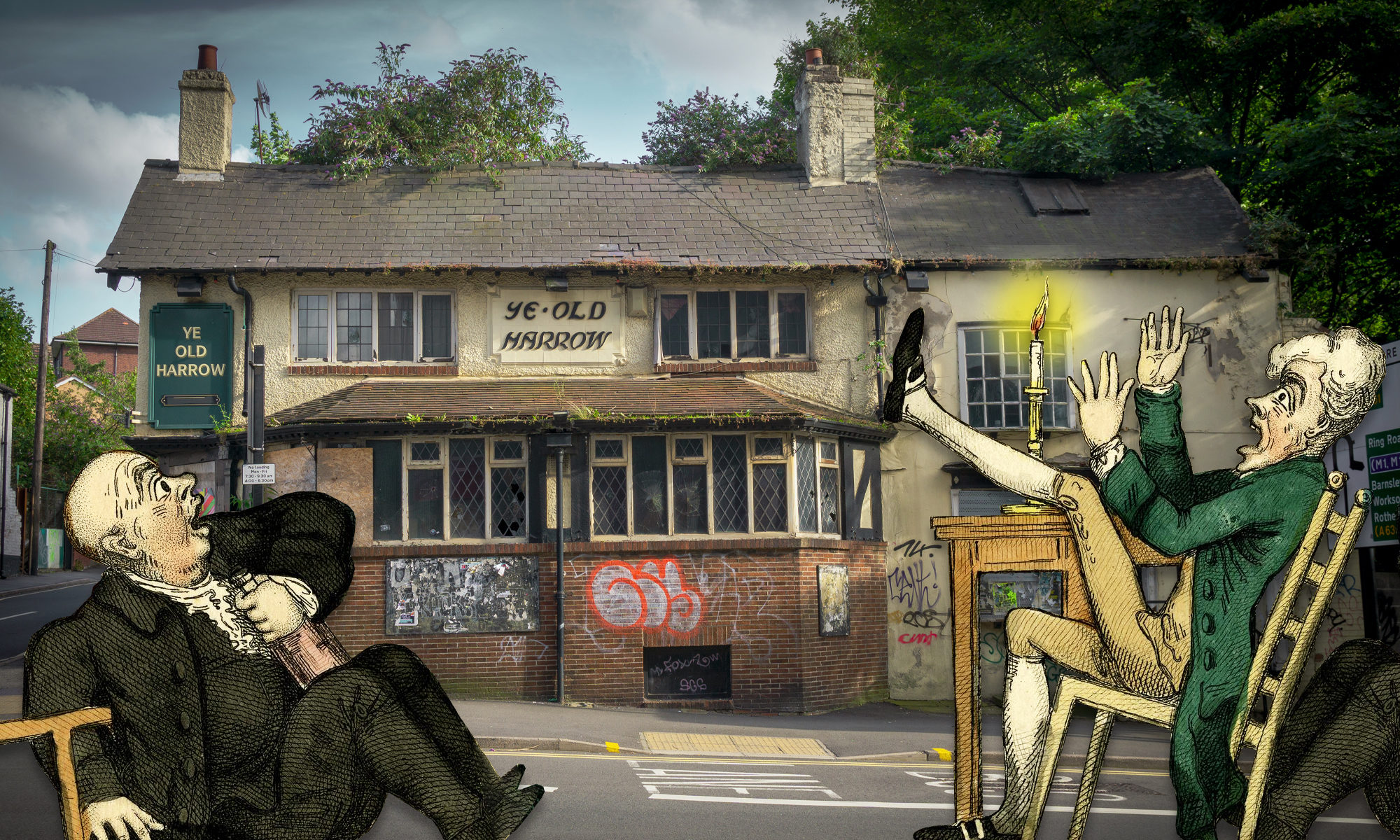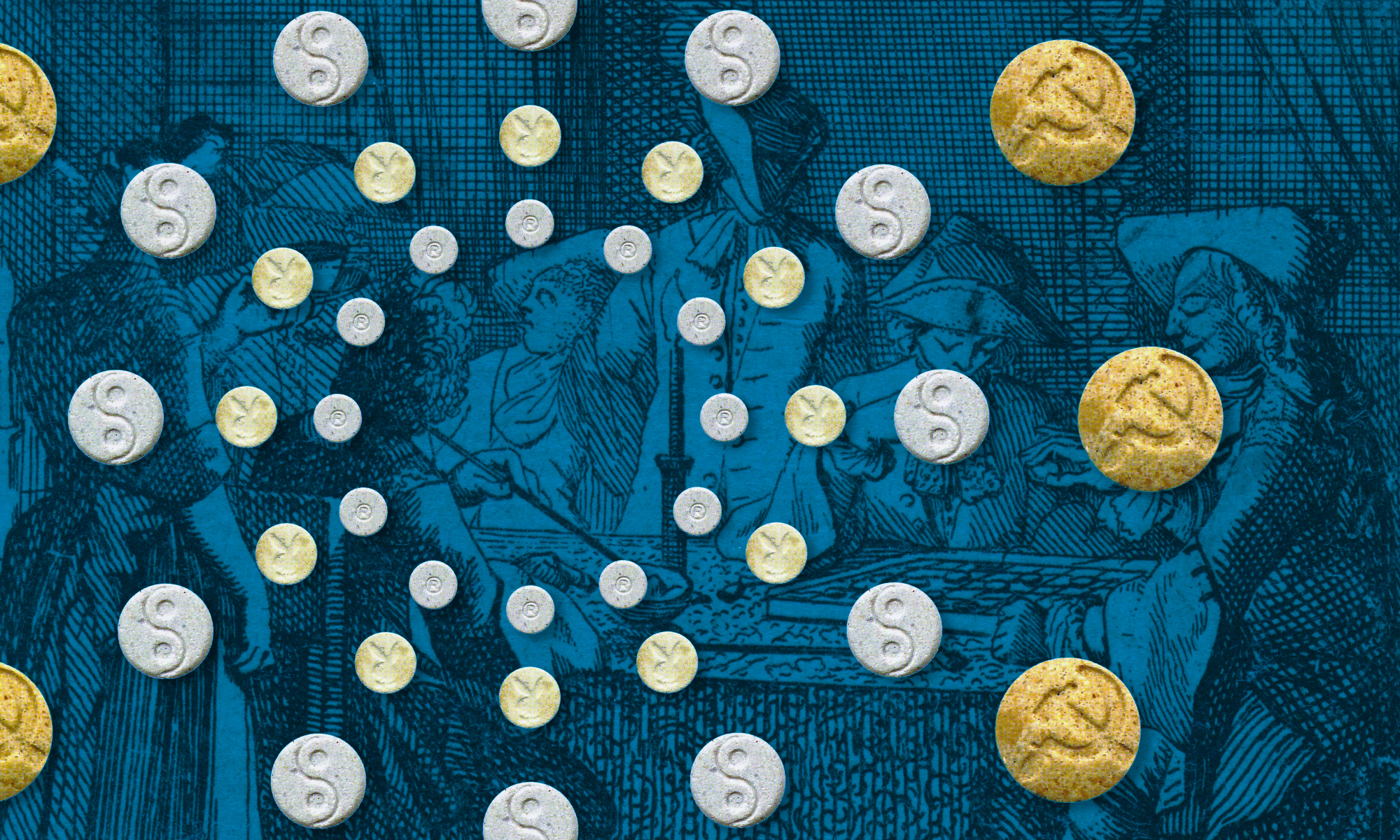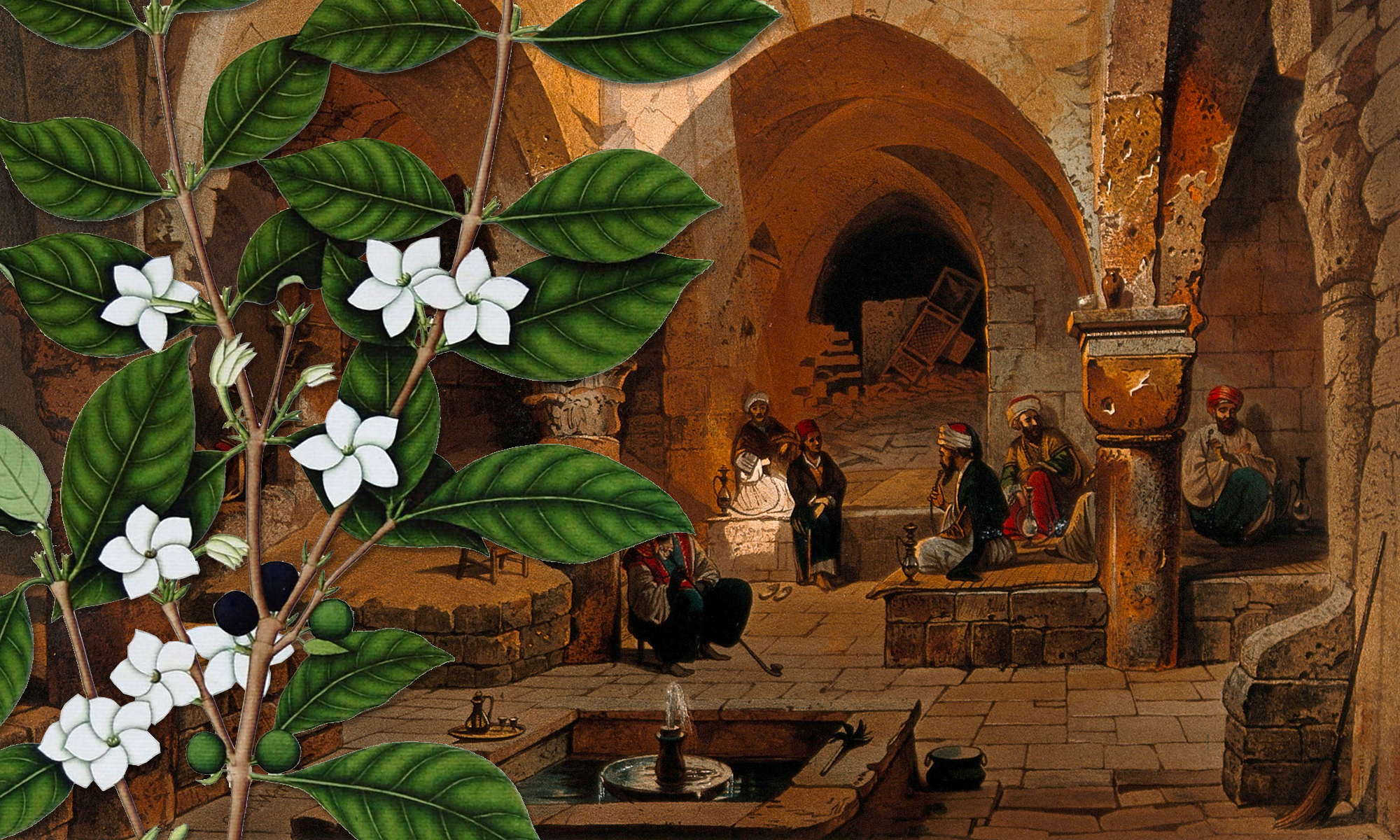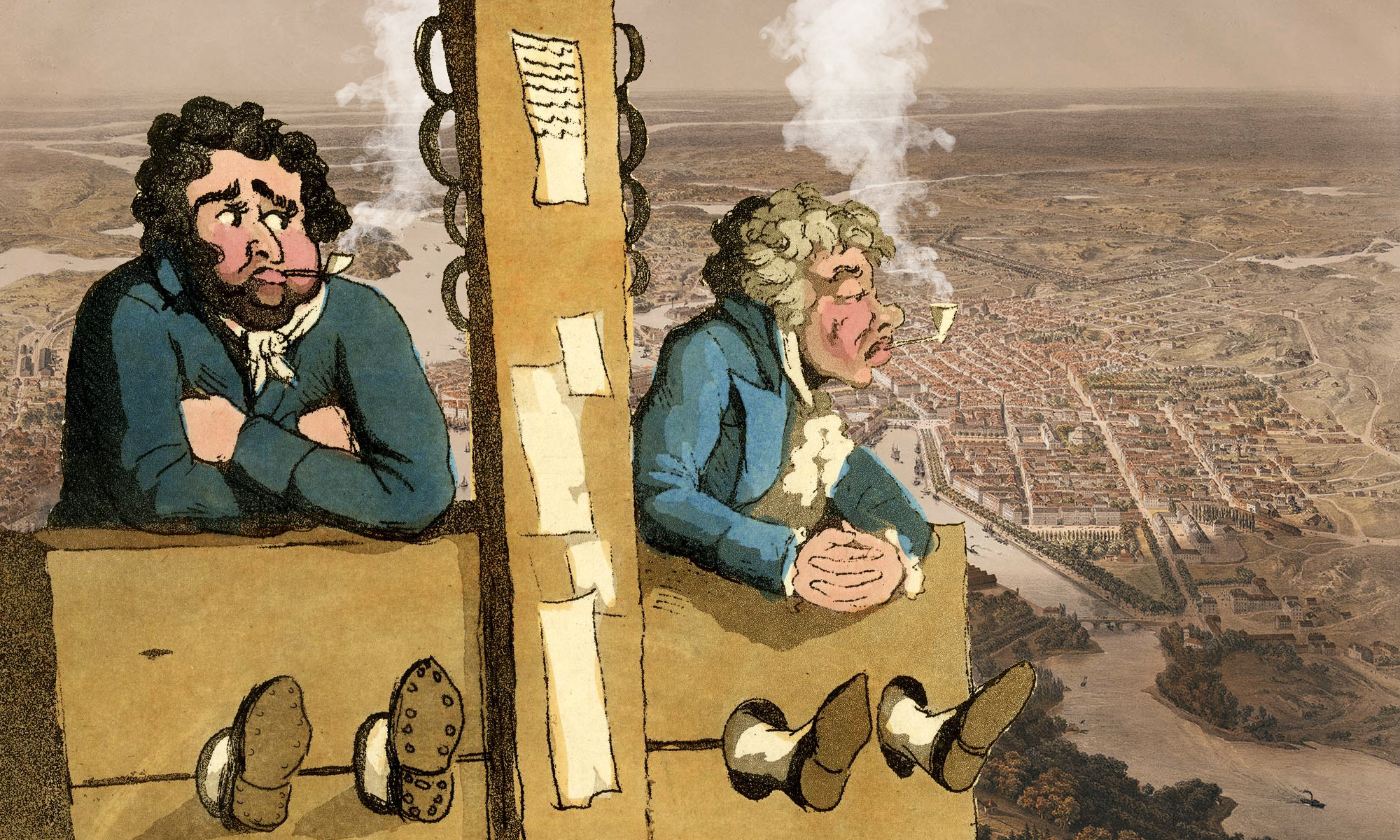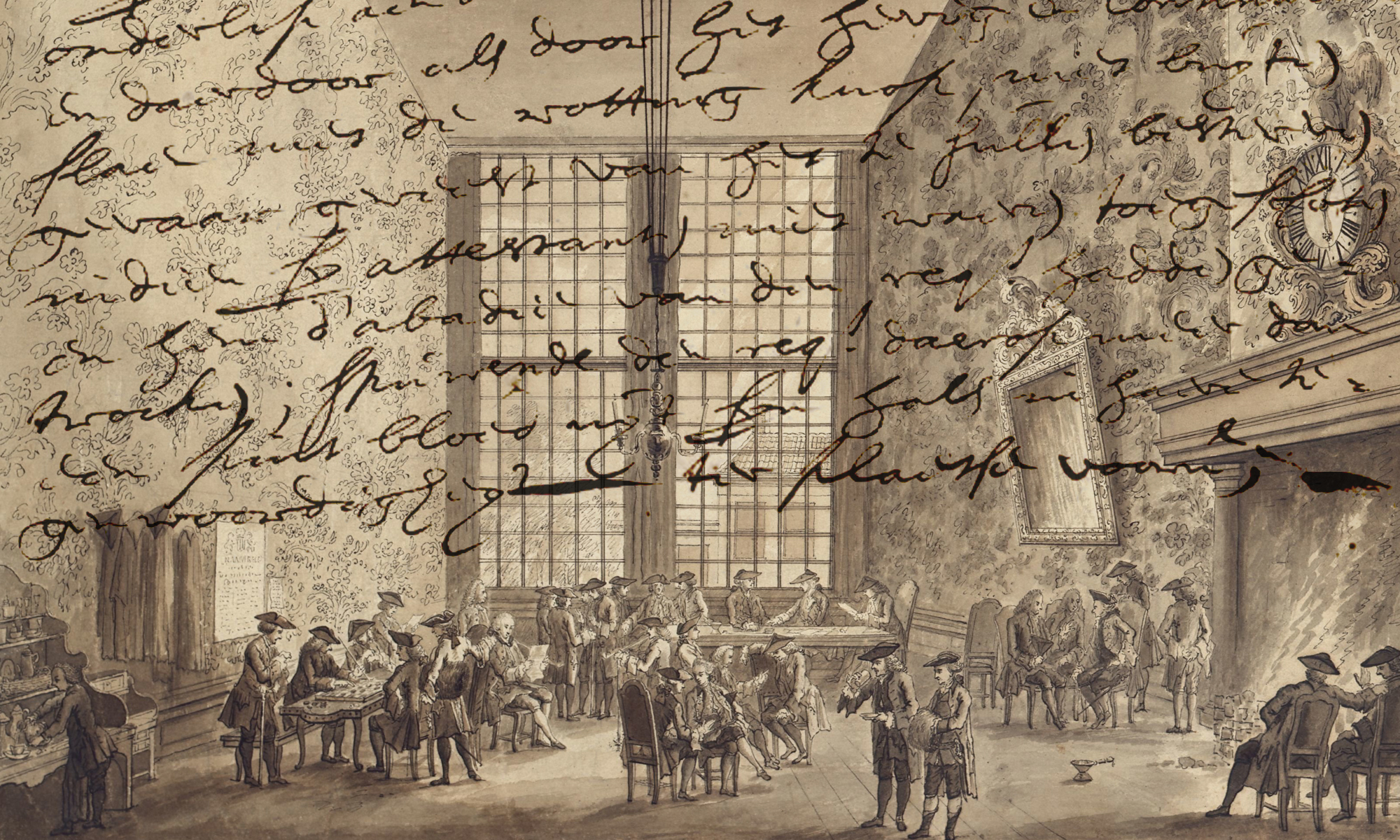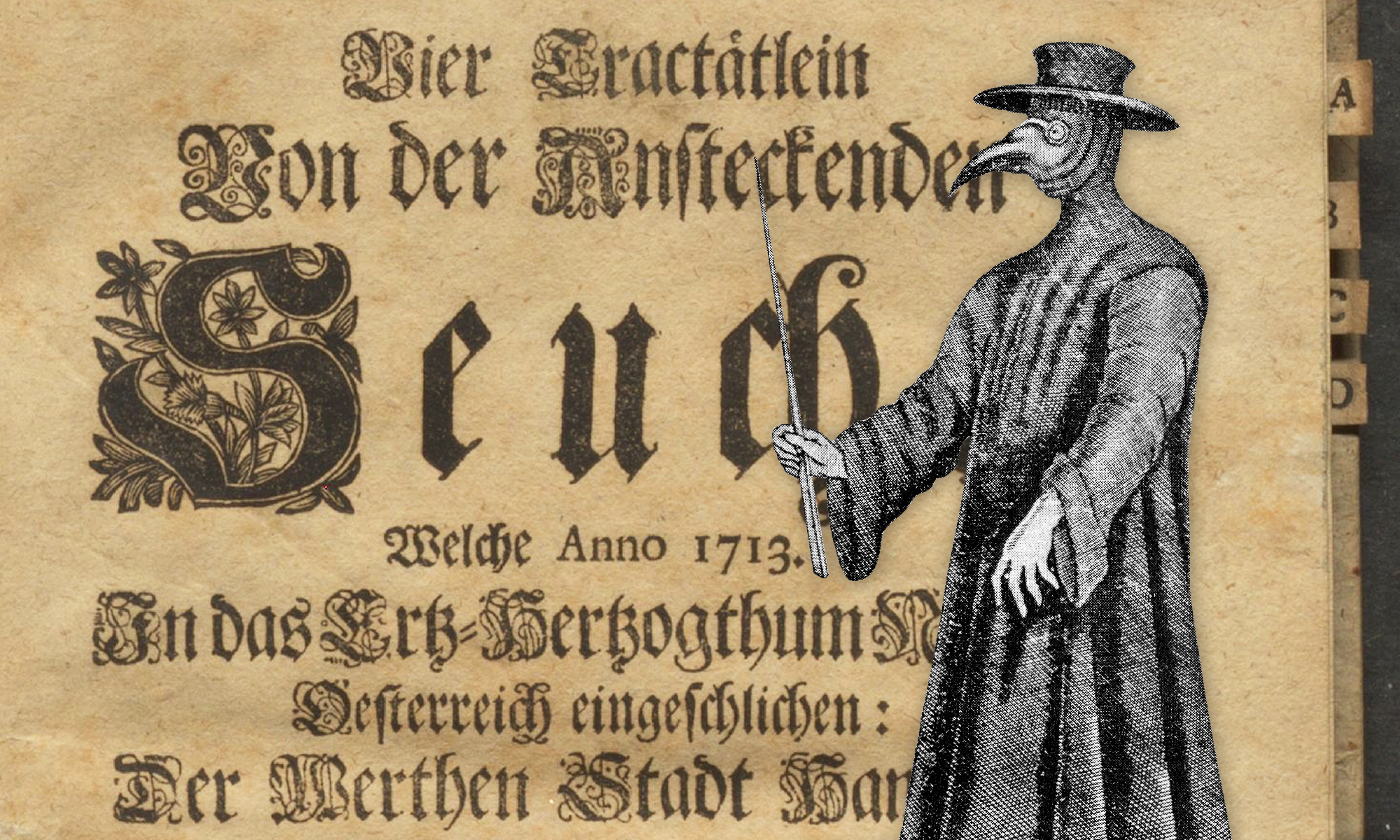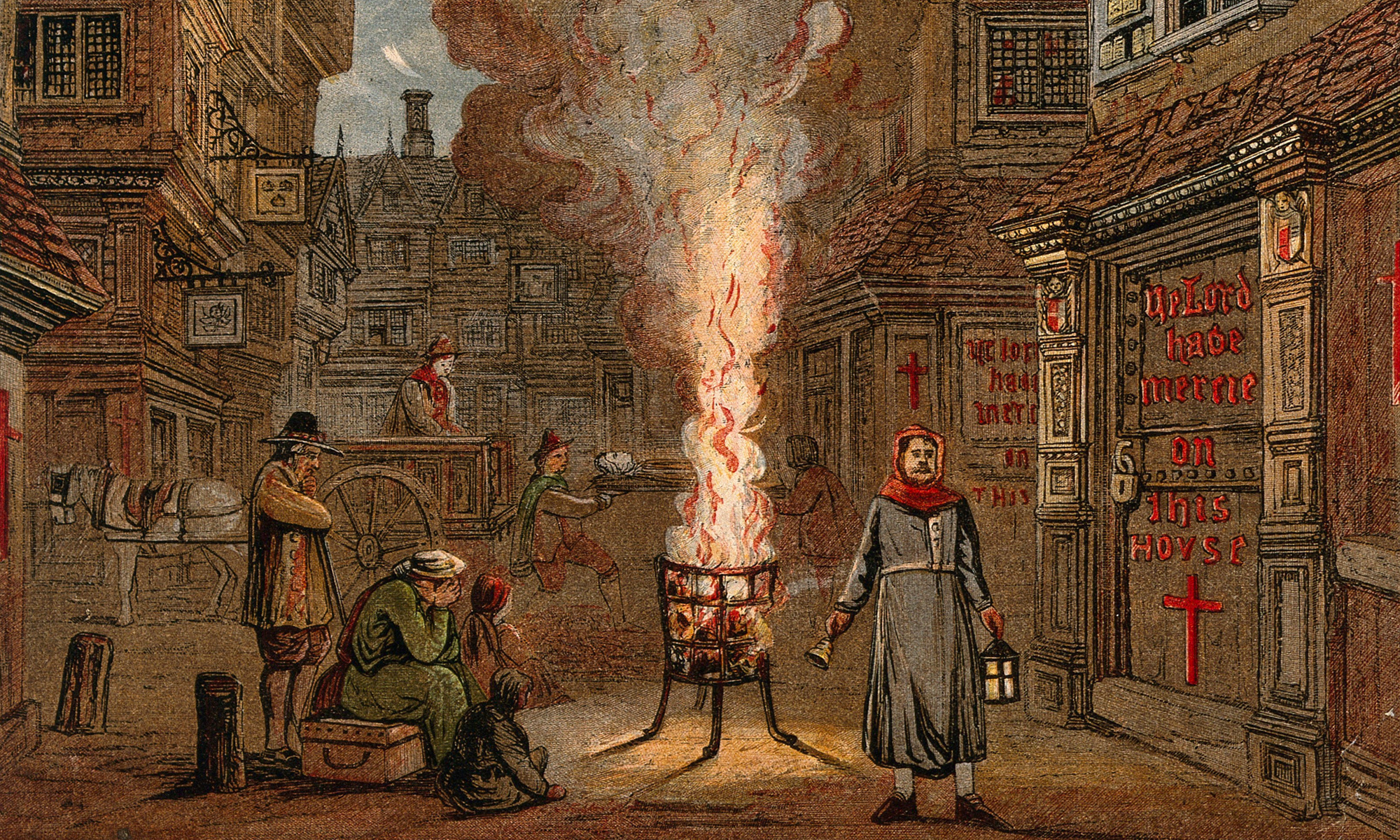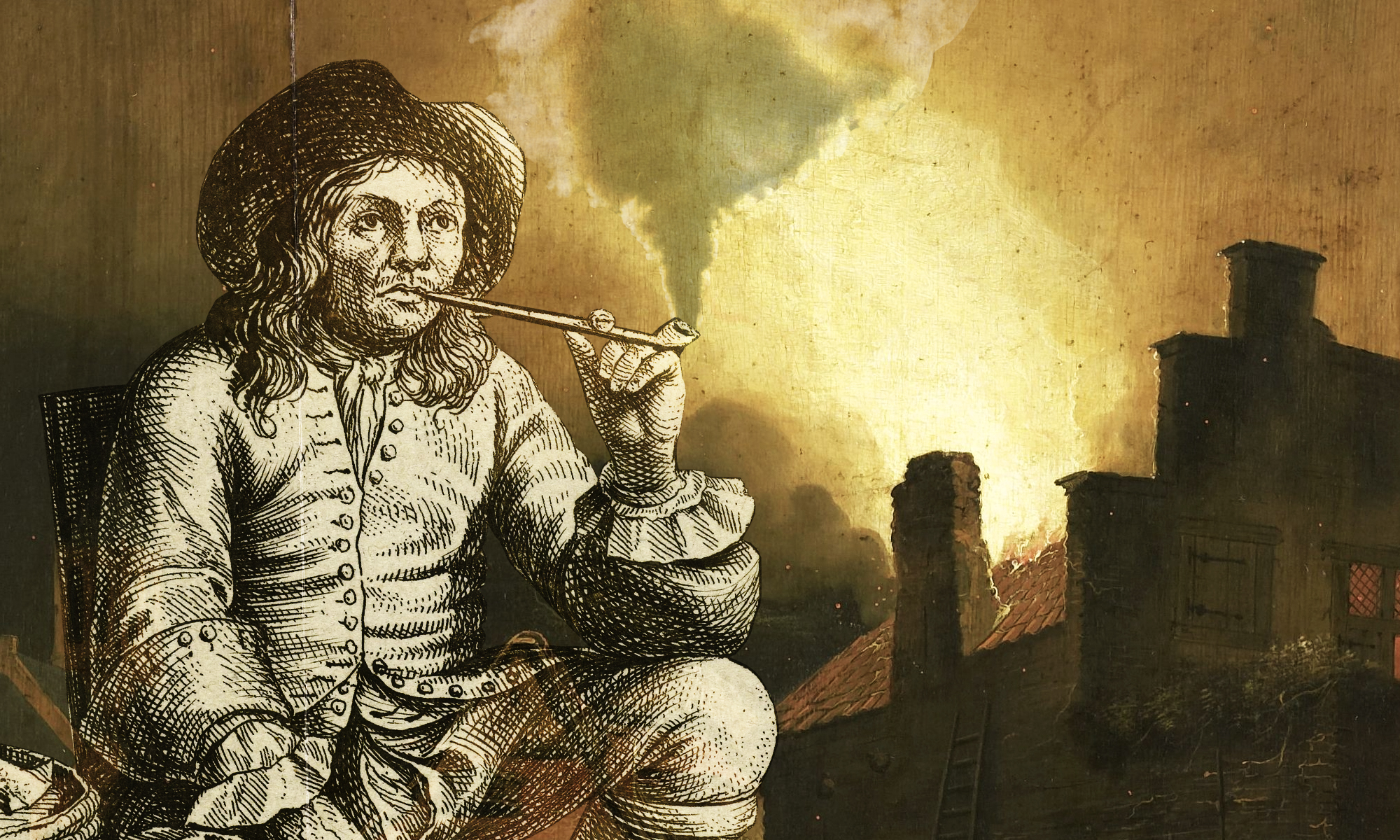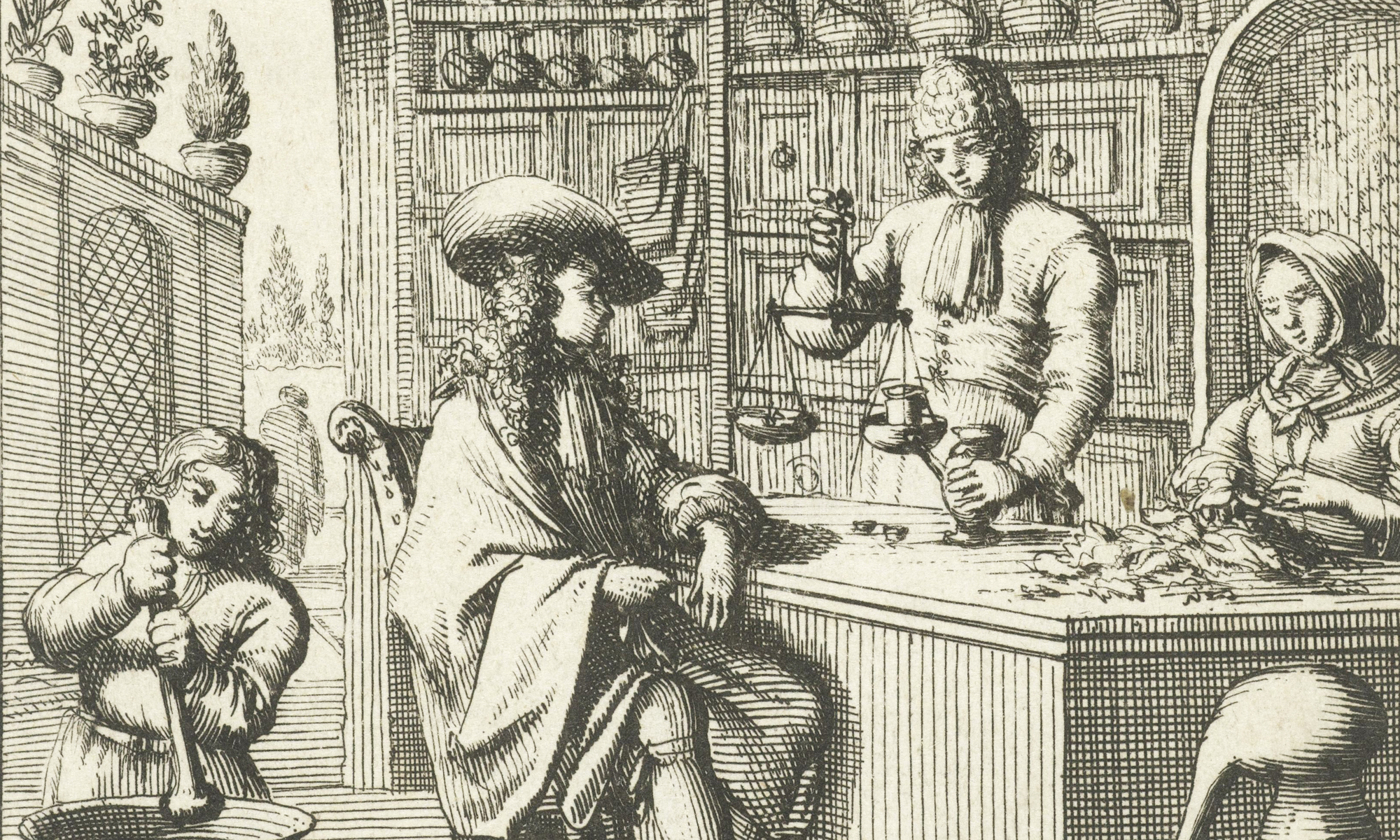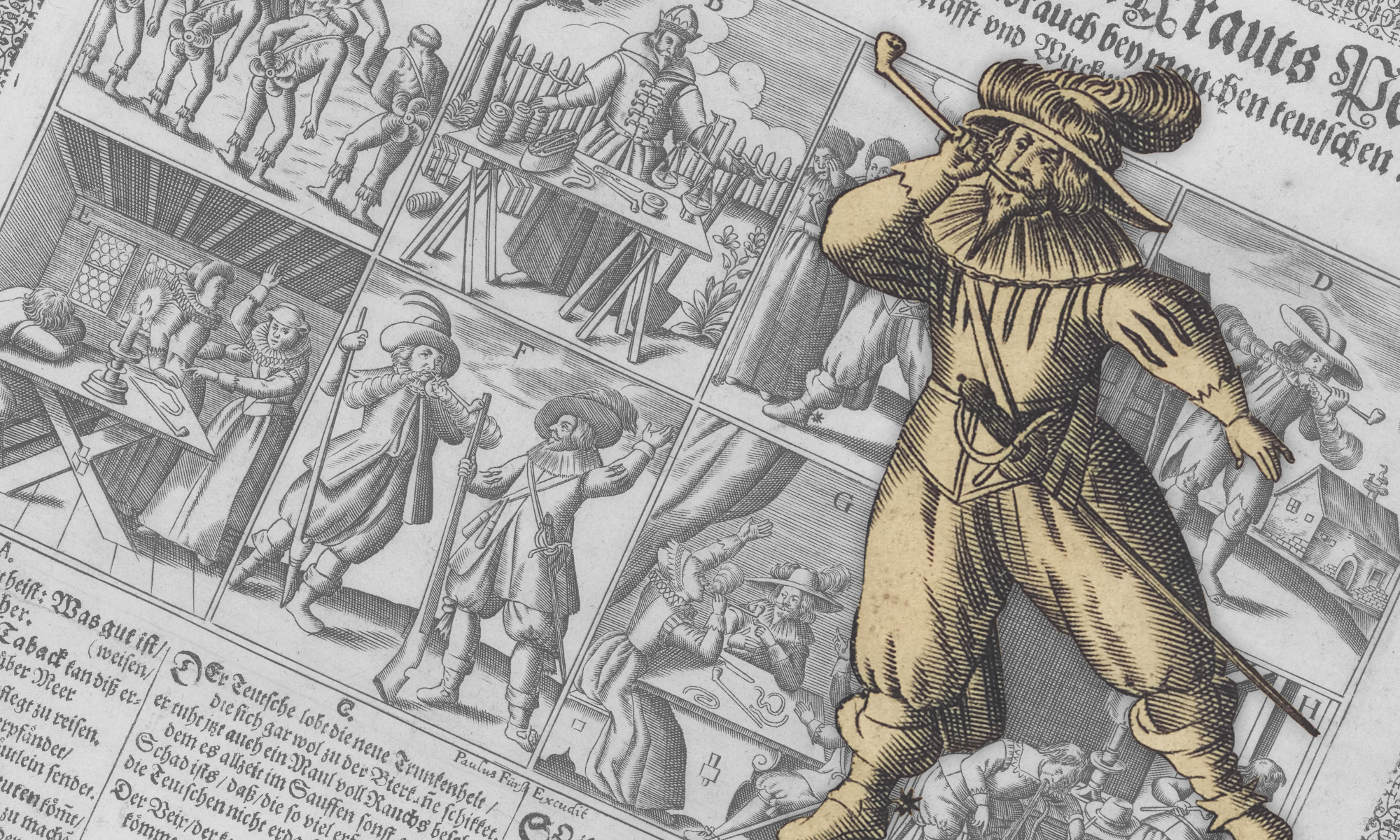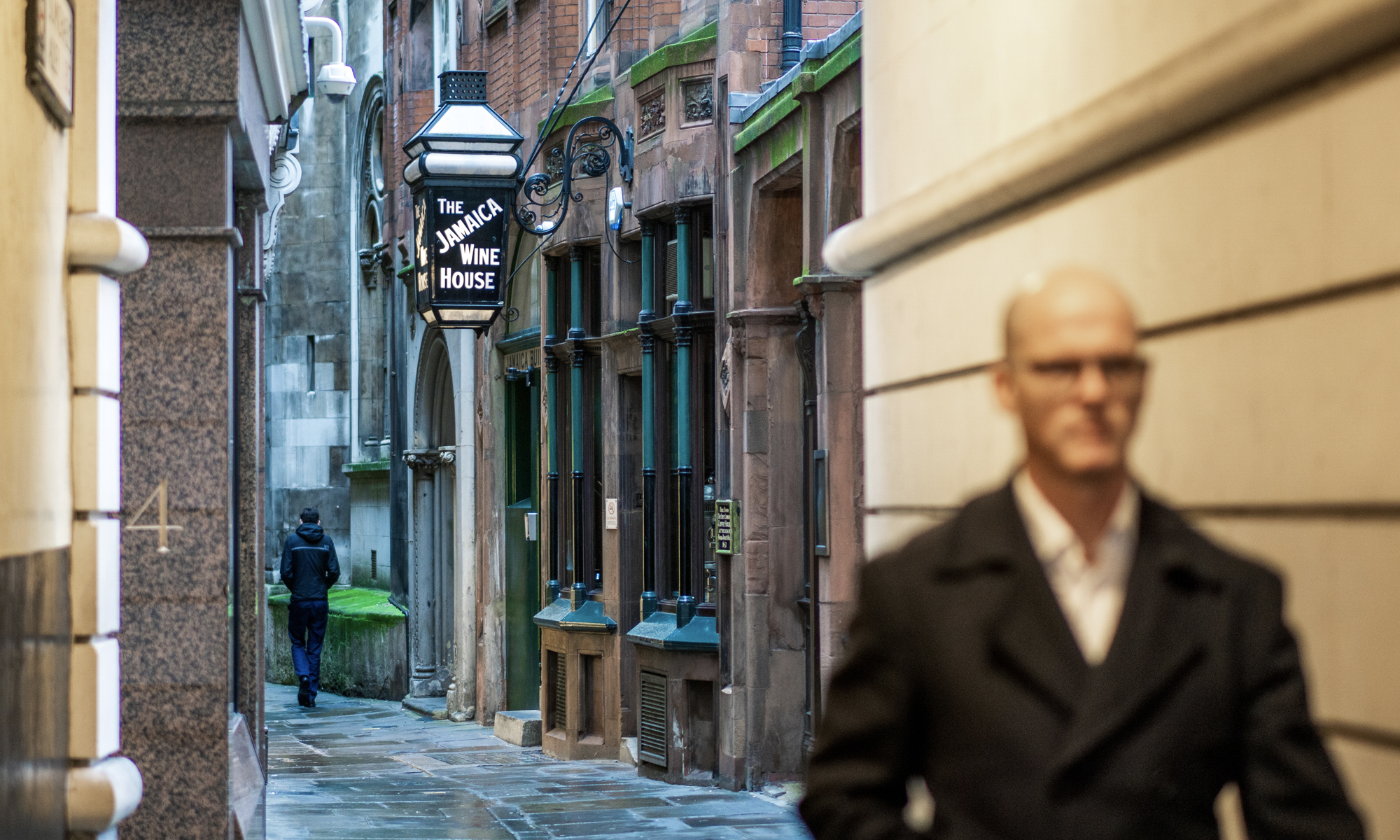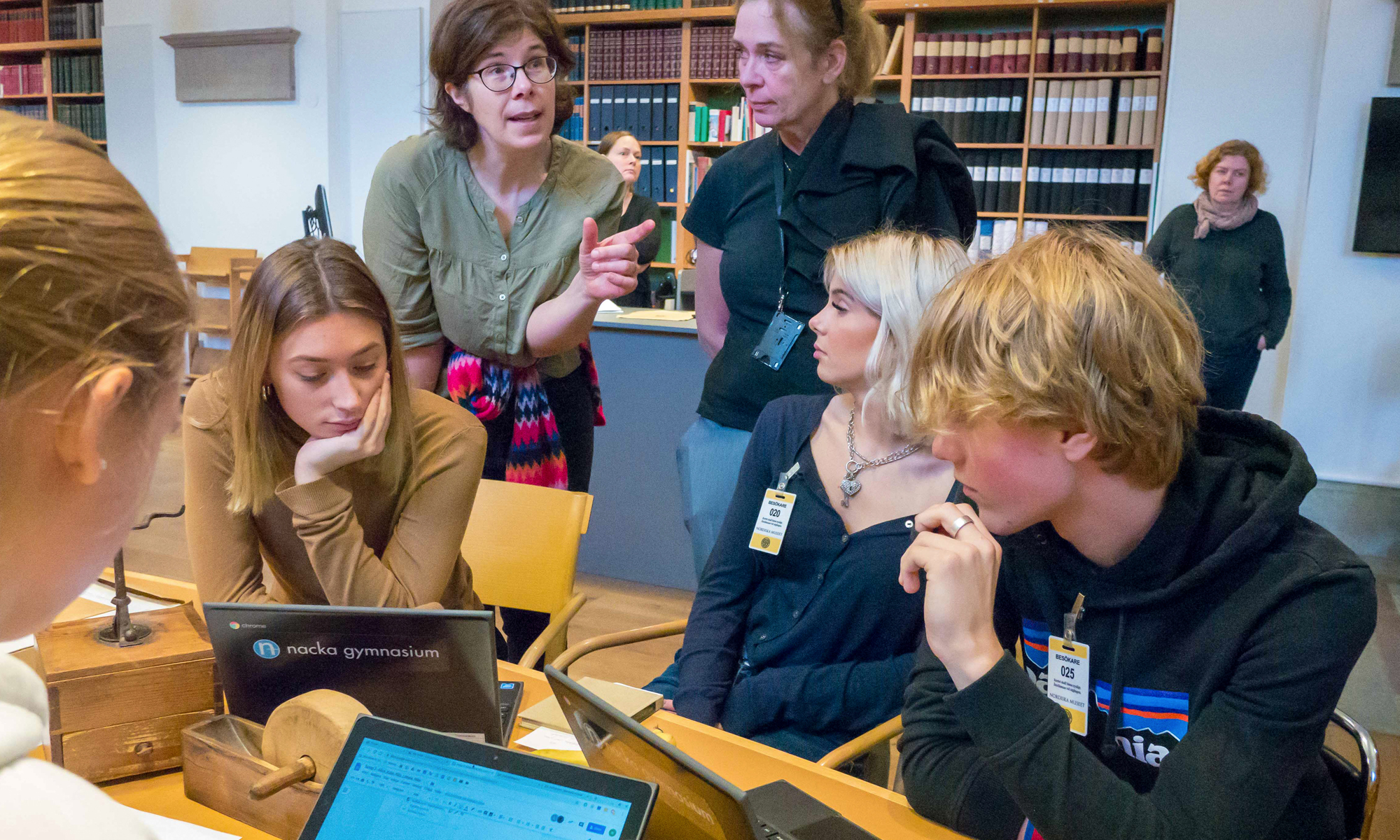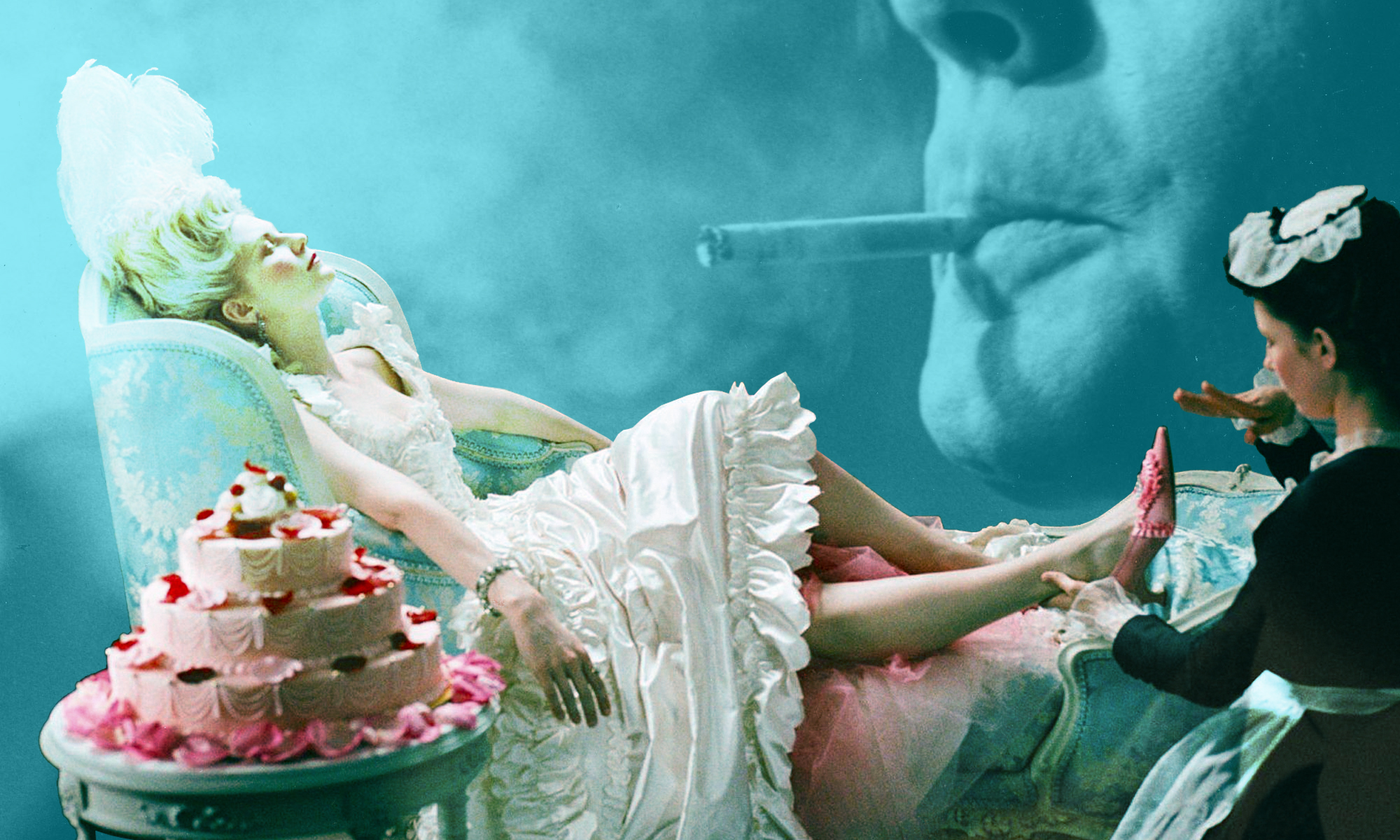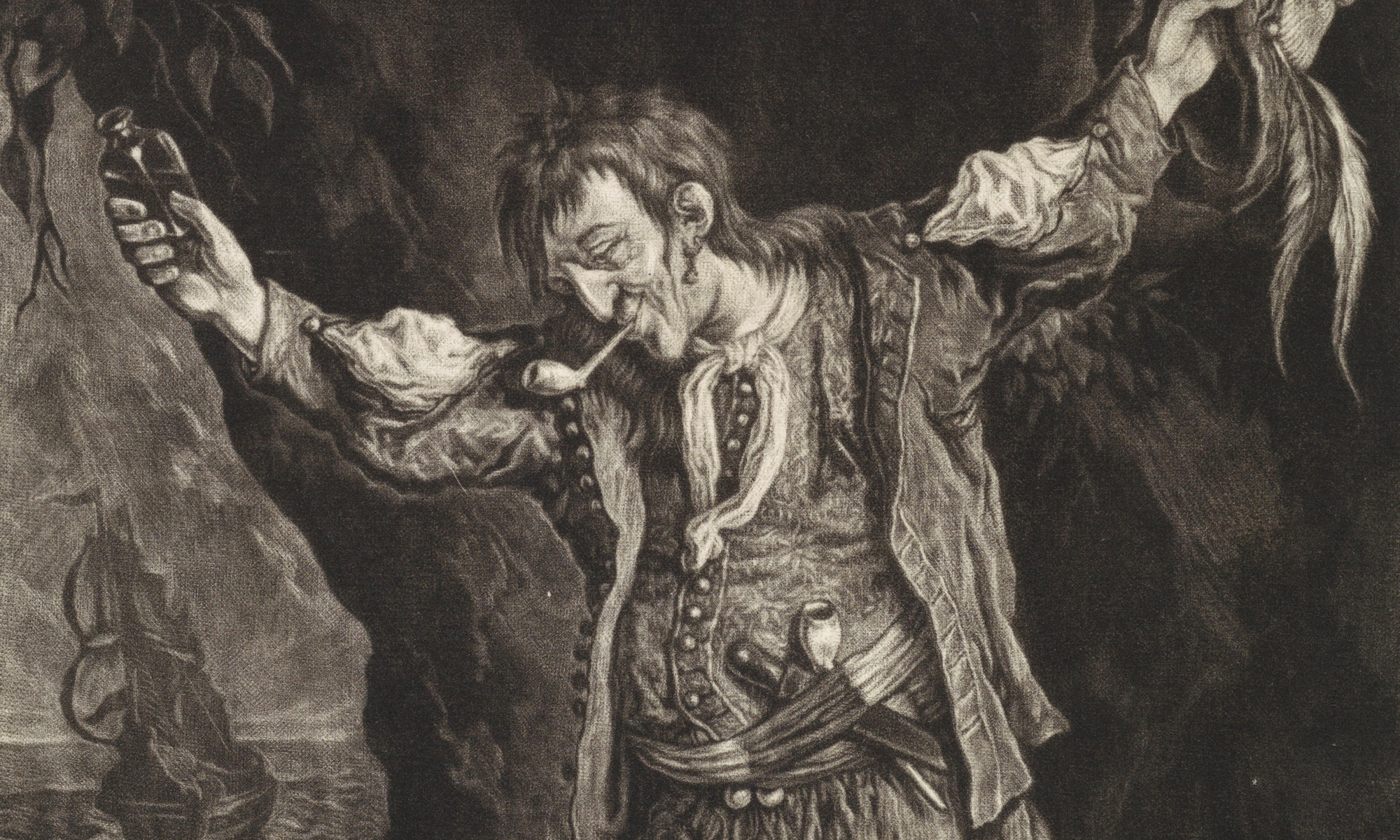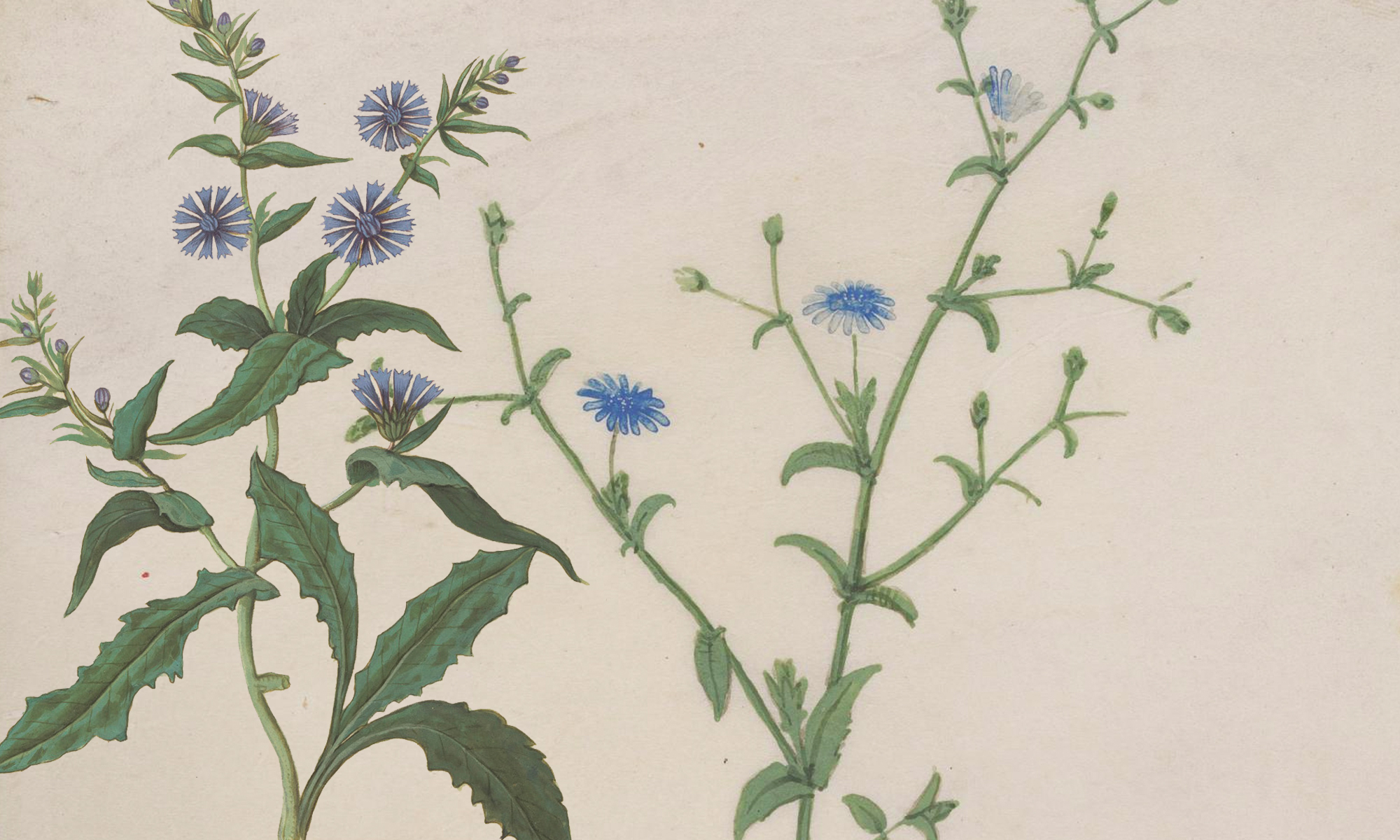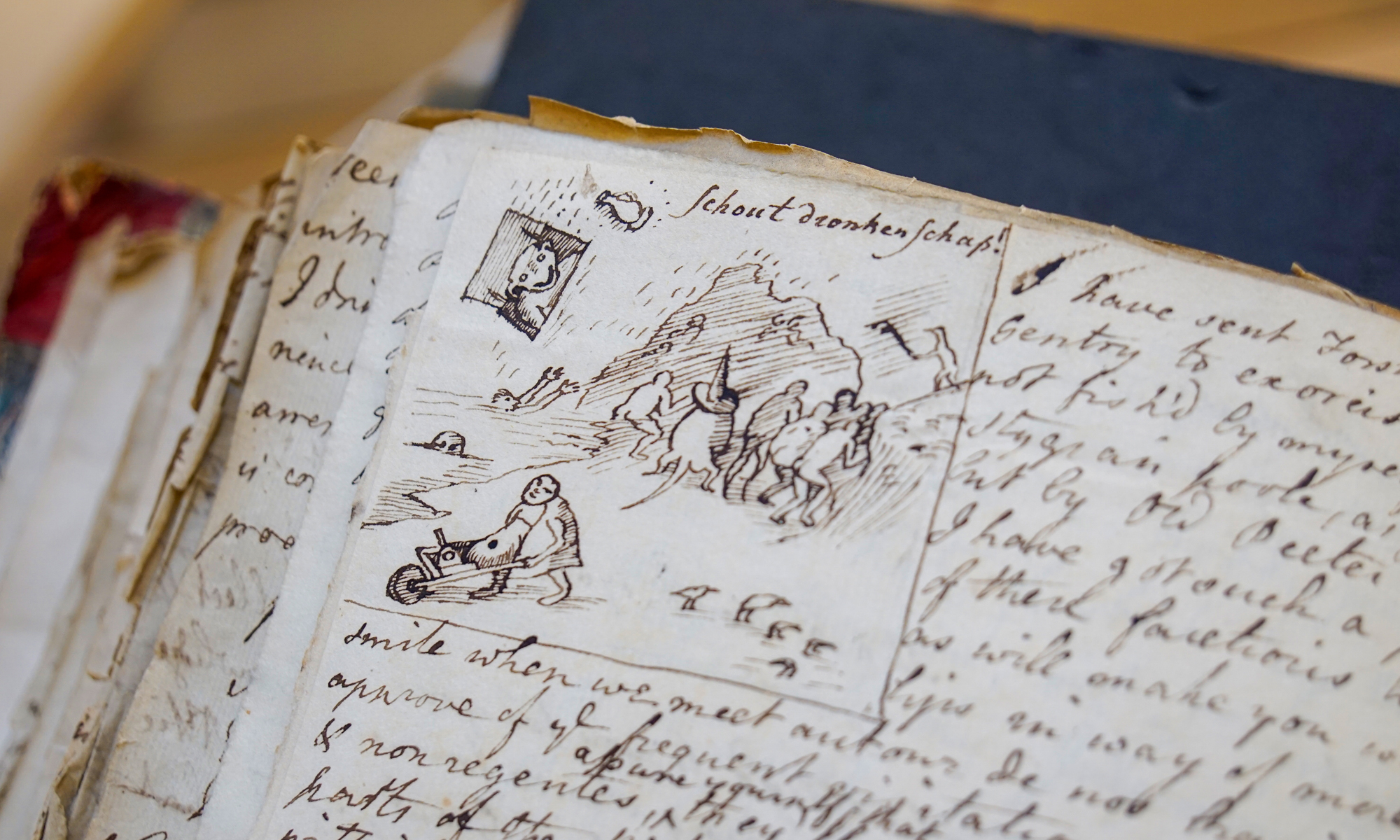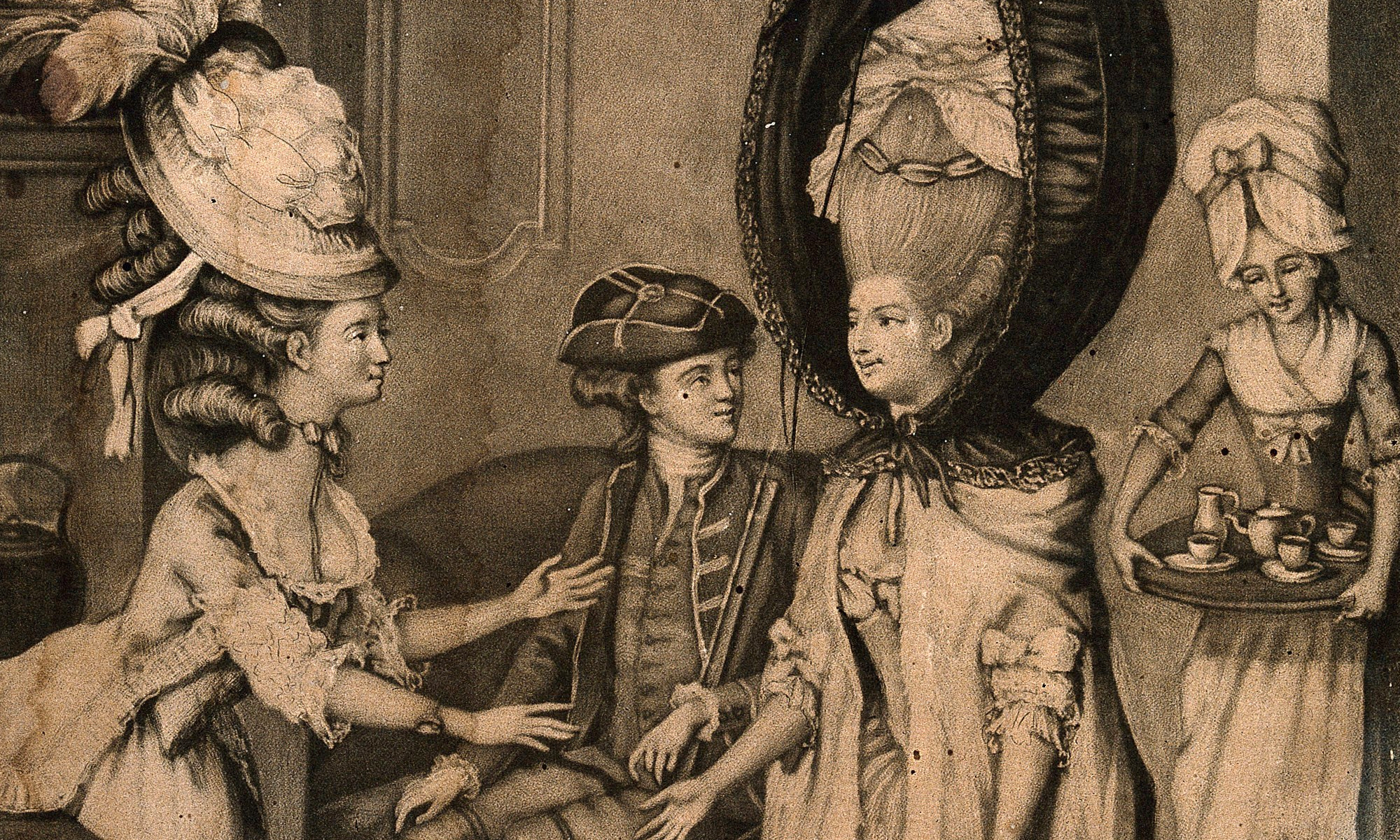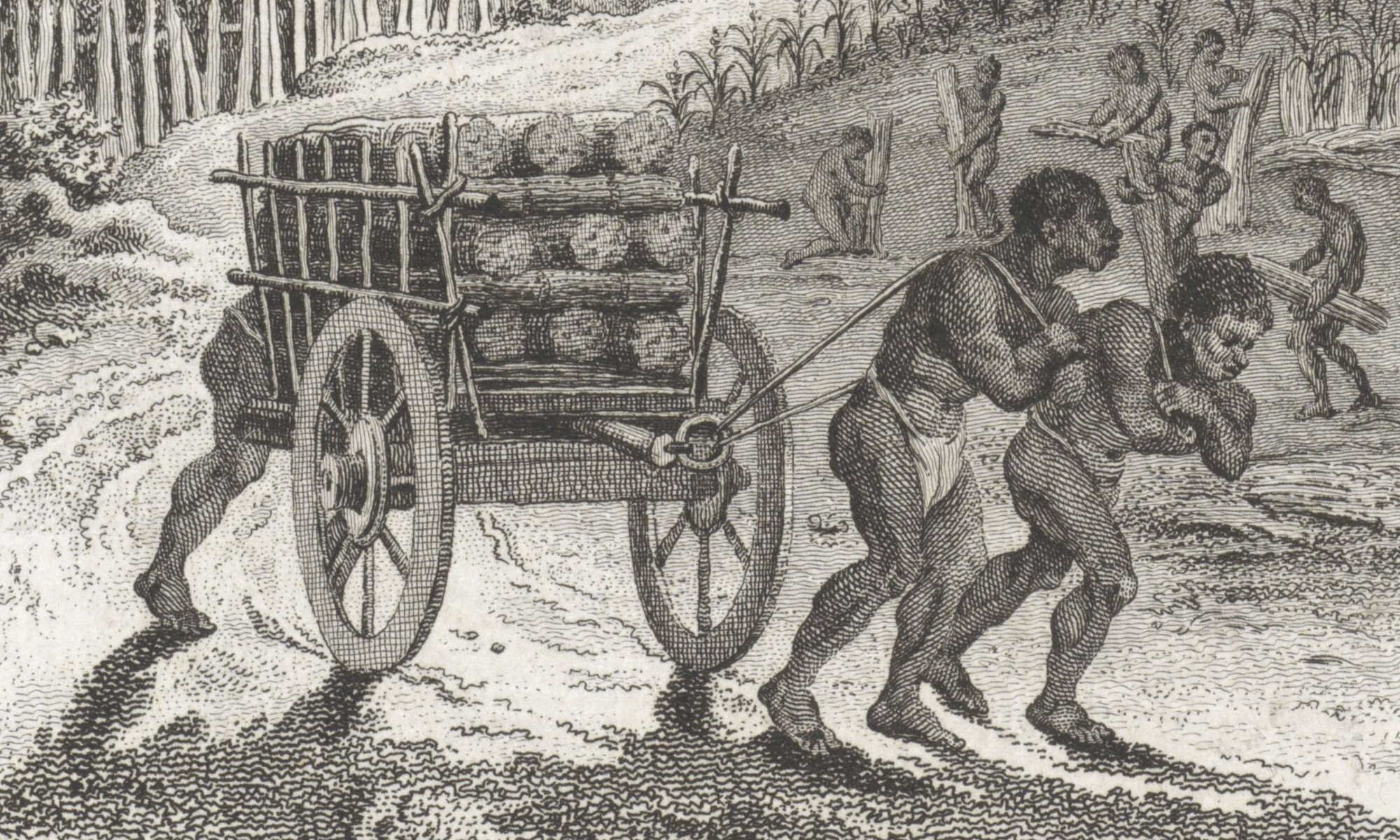Following a well-attended launch event last month, the project’s Virtual Exhibition is now live! Three years in the making, and conceived as a digital scrapbook, the exhibition brings together over 1,500 exhibits – or ‘scraps’ – from archives, libraries, and museums. All relate to the introduction, circulation, sale, enjoyment, and regulation of new intoxicants in sites and spaces across our case study cities of Amsterdam, Hamburg, London, and Stockholm. Designed to be used for research, teaching, or simply general interest, the exhibition provides an innovative and easy way to explore and compare the entangled histories of intoxicating spaces in the Baltic and North Seas. We hope you have as much fun using it as we had creating it, and do let us know what you think!
Love and Intoxication in a Renaissance Pleasure Palace
This short film documents my collaboration with Phil Withington, other academics, and creative partners to explore the significance of intoxicants in Ben Jonson’s The New Inn, and its connections to Bolsover Castle. Jonson, author of Volpone and The Alchemist, produced the play at the start of 1629. It’s a romantic comedy set in The Light Heart, an inn where the Host – a nobleman in disguise – receives high-born revellers and their servants. Beer and wine flow as secrets and identities are revealed. The play appeared on the London stage soon after Jonson’s patron William Cavendish was made an Earl, and his mother became a Baroness. The family had also just begun an impressive extension to Bolsover Castle, their sumptuous pleasure house in Derbyshire, creating a palatial venue for feasting. Was The New Inn intended for a celebratory event featuring wine, the famous Derbyshire ale, and lavish amounts of sugar?
Continue reading “Love and Intoxication in a Renaissance Pleasure Palace”
‘It Brought Much Slime Out of the Gutts and Made Me Cheerfull’: Defining Intoxicants in the Diary of Robert Hooke
The word ‘intoxicant’ has a central place in this project, as in wider scholarship. But what does the term really mean, and why do historians use it so regularly? Intoxicant is mainly used mainly to describe products which intoxicate – that ‘fuddle or make drunk’, or that artificially alter one’s physiological or neurological state. As Phil Withington and others have argued, whereas alternative words like ‘drugs’ possess strong ideological connotations pertaining to modern society and are more limited in what they evoke (mainly classified substances), intoxicant is a broadly encompassing neutral term, making it useful for describing and investigating a host of present-day consumables in different historical contexts. Usually, as in the Intoxicating Spaces project, scholars who talk about intoxicants refer to a familiar range of narcotics such as alcohols, coffee, opium, tea, and tobacco. Most of these commodities became popular from the early seventeenth century onwards as a consequence of increasing global trade and colonialism.
Getting to the Root of It: Saloop in Early Modern London
After a long night of ‘frolicking’, which included plenty of drinking, the friends George Price and Samuel Plumpton continued their evening with a hot dish purchased from a stall. In many ways these actions seem familiar, almost like grabbing a coffee at the end of a night out. Yet the thick, creamy concoction they stopped for, saloop, is probably unfamiliar. Originally made from powdered orchid roots, the dish was imported from the Ottoman Empire, arrived in the late seventeenth century, and flourished on London’s streets at the turn of the eighteenth century. However, by the late nineteenth century, the drink had faded into obscurity, forgotten from history books, and often discussed as no more than a passing fad. Yet despite its brief lifecycle, saloop provides unique insights into the relationship between the consumption of new exotic goods and the space and routines of the early modern metropolis.
Continue reading “Getting to the Root of It: Saloop in Early Modern London”
Narcotic Letters: New Intoxicants in the Correspondence of Isabelle de Charrière
Private correspondence, in which there has been a recent surge of historiographical interest, is one of the richest sources we have for recovering and reconstructing the day-to-day consumption of new intoxicants by historical actors. The letters of the eighteenth-century novelist and essay writer Isabelle de Charrière, better known in the Netherlands by her maiden name Belle van Zuylen, are a very nice example.
Continue reading “Narcotic Letters: New Intoxicants in the Correspondence of Isabelle de Charrière”
Worlds of Opiates Webinar
The project rounded out 2021 with a ‘big bang’ in Amsterdam, when work on opium by our Utrecht research team was translated into a unique project in public space: Worlds of Opiates, a pop-up exhibition co-created with artist Corne van der Stelt, Het Uitvindersgilde, and Poppi, a start-up drugs museum and social enterprise. Visitors to the show walk through an immersive field of giant 3D poppy flowers, and discover the many attributes of the most powerful flower known to mankind. Interactive elements tell stories about opium, laudanum, heroin, and painkillers, the same substance in different guises eliciting different societal responses.
Swings and Syringes: Intoxication and Public Space
Intoxicating substances are part of everyday life, especially during social interactions. At the same time, pressure on space in urban regions and cities is great; not only today, but also in the past. How do cities and urban populations past and present accommodate drug consumption and negotiate public space use? Whose voices are heard when it comes to policymaking about public space and substance use? Moreover, what happens when you bring historians, criminologists, political scientists, anthropologists, and practitioners from drug work together to discuss these questions? Back in October we gave it a try and invited experts from different backgrounds to join in a horizon-widening discussion based upon the fast-talk method, a focused and time-limited discussion designed to generate policy-relevant information.
Continue reading “Swings and Syringes: Intoxication and Public Space”
New Project Exhibition: Worlds of Opiates
From 3 December 2021–29 March 2022, our Utrecht research team will hold a free pop-up exhibition for the general public at Amsterdam Central Station, one of the city’s major thoroughfares. The interactive show, organised in conjunction with the Poppi Drug Museum and called Worlds of Opiates, invites visitors to explore the history of opium in Amsterdam and its associated public spaces in a global context. Drawing on the findings of the project, and incorporating data from the 1970s and 1980s produced by our HERA partner project Governing the Narcotic City and the Mainline Foundation for harm reduction, the exhibition features both physical and digital objects, as well as historic maps of opium distribution in Amsterdam. Visitors can open and investigate the drawers of an original apothecaries’ counter, watch slideshows, access additional information on their mobile devices via QR codes, or listen to lectures by historians on topics such as opium use among the eighteenth-century Dutch elite, early modern opium use in Scotland, or the drug’s connection with Afghanistan.
Continue reading “New Project Exhibition: Worlds of Opiates”
Loten’s Dagwyser (1783): A Notebook of a Reluctant Dutch Opium Eater
In Utrecht University Library there is a Dagwyser, or almanac, for the year 1783, which formerly belonged to Joan Gideon Loten (1710–1789), a Dutchman, who had been Governor of Makassar [Sulawesi, Indonesia] (1744–1749) and Ceylon [Sri Lanka] (1752–1757) and who spent most of his career with the Dutch East Indies Company. The Dagwyser is a booklet covered by green parchment, a so-called ‘envelope book’. The entries in the almanac were written in his house in Drift 27, Utrecht, today the location of the university library. The notebook contains short entries nearly every day, mostly in English and Dutch. It contains notations about the people he met in town, who he visited, or who visited him and his wife. A keen ornithologist, he also recorded bird sightings, and noted thoughts and questions to himself.
Continue reading “Loten’s Dagwyser (1783): A Notebook of a Reluctant Dutch Opium Eater”
Slavery, Capitalism, and the Industrial Revolution: Sweet Industriousness and the Role of the Sugar Economy
In this lecture, co-organised with the Sheffield Centre for Early Modern Studies and delivered in person at the University of Sheffield on 7 October, Professor Maxine Berg (University of Warwick) previews material from her new book – co-authored with long-standing collaborator Professor Pat Hudson – on Slavery, Capitalism, and the Industrial Revolution. The book provides a new scholarly synthesis of ideas and research on the impact of slavery and British colonialism in the Americas on the economy of the metropole during the long eighteenth century. In the lecture, Professor Berg focusses on the chapter addressing the transatlantic sugar economy. She charts huge increases in sugar production and imports into Europe (especially in/from the East and West Indies), the industrial complex by which it was boiled and refined on plantations and in domestic factories, and its distribution via a network of grocers and confectioners.
The Nineteenth-Century Coffee Commodity Chain: Representation and Reality
In the first part of my PhD thesis, I explored how Douwe Egberts, one of the largest Dutch producers of coffee and tea, used images of factories and cultivation landscapes in their advertising campaigns between 1900 and 1950. By applying the semiotic insights of Roland Barthes, and theories of visual archetypes formulated by art historian Ernst Gombrich, I examined each marketing image on four levels. Firstly, I determine what their objective characteristics were, such as colours and techniques. Secondly, I analysed what subjects were foregrounded in these images. This differed depending on the type of environment depicted; for example, factories were often shown with many smoking chimneys, included numerous means of transport and carriers, and had captions such as ‘steam roasting factory’. Images of coffee and tea cultivation landscapes, meanwhile, often included palm trees, sweeping hills, and identifiably non-European figures and buildings. In the last category, the entire commodity chain – almost every step between the cultivation and consumption of coffee – was depicted.
Continue reading “The Nineteenth-Century Coffee Commodity Chain: Representation and Reality”
Intoxicants and Early Modern European Globalization: The Making of a Special Issue
This month and next, The Historical Journal will be publishing a special issue dedicated to examining the relationship between ‘Intoxicants and Early Modern European Globalization’. Co-edited by me and Kathryn James, the open access volume consists of an introduction and eleven case studies unpacking the spaces, practices, and material culture that characterised the production and consumption of intoxicants in Europe, the Atlantic, and South Asia between the sixteenth and eighteenth centuries.
Object Lessons: Co-Creating an Exhibition with School Pupils and the German Maritime Museum
One ear-achingly chilly day in February 2020, forty-odd pupils from secondary schools in Oldenburg and Neu Wulmsdorf, three teachers and I descended on the German Maritime Museum (DSM) in Bremerhaven. Our mission? To explore the museum’s extensive collection of intoxicant-related historical treasures and to brainstorm ideas for an exhibition – researched and curated by students with assistance from staff at the DSM – on the history of tobacco, coffee, tea, chocolate, and sugar in port cities of the early modern period.
Trouble Brewing: Ale, Beer, and Witchcraft
A new article on The Conversation, which seems to have gained quite a lot of traction, argues that the modern iconography of witchcraft – namely pointed hats, cauldrons, broomsticks, and cats – can be traced to the commercial practices of, and patriarchal smear campaigns against, the female ale brewers of the late medieval and early modern periods. This is not a new contention, but one that has been circulating online with increasing frequency over the last few years. It’s an appealing thesis that accurately captures the domination of household ale brewing by singlewomen, wives, and widows before the Black Death (one third of women brewed regularly or occasionally in the towns and villages of the early fourteenth century); their increasing marginalisation from the trade as it expanded, capitalised, centralised, and professionalised from the 1350s (accelerated by the arrival and assimilation of a new intoxicant, hopped beer); and the overwhelmingly pejorative cultural construction of female brewers. However, the narrative is also misleading and simplistic, and elides the more subtle and interesting ways in which witchcraft and the manufacture and retail of intoxicants were conceptually intertwined in the medieval and early modern eras.
Continue reading “Trouble Brewing: Ale, Beer, and Witchcraft”
Tea: The Most Normal Thing in the World?
Alfa Academy Continue reading “Tea: The Most Normal Thing in the World?”
Workshop Report: Drugs and Drollery
It was an honour for the Wellcome Collection to join Intoxicating Spaces and a group of eminent scholars for an online workshop that took place on 21–22 January 2021 on Modes of Persuasion: Humour and the Promotion and Control of Intoxicants Past and Present. The workshop was originally suggested by Angela McShane while she was head of Research Development at Wellcome Collection. It was a good choice of subject, as the humorous treatment of stimulants and narcotics by promoters and controllers is a significant theme in the Wellcome collections. The main aim of the event was to show how playfulness, levity, satire, and wit have historically been used to inform campaigns and communications around licit and illicit drugs.
Thinking Visually with Saartjie Baartman: Intoxicated by Difference
Published on 18 September 1810, this etching of Saartjie Baartman (1789–1815), who had recently arrived in Britain and came to be known as the Hottentot Venus, testifies to the contemporary obsession with exoticism. Born among the Khoikhoi people of southern Africa, Baartman’s life is perhaps one of the most striking examples of colonial exploitation. Subjected to Dutch domination in her childhood and adolescence, she was objectified by the British in her youth, and was dehumanised by the French for the rest of her life and beyond. Histories of her display in the freak shows of London and Paris in the course of the long eighteenth century bring into focus torturous episodes of violence and humiliation. These were justified as legitimate scientific curiosity regarding her body, based on polite standards of respectability and refinement. Standing exposed on the imperial stage, Baartman’s (mis)treatment at the hands of the metropolitan populace overstepped the premises of Enlightenment virtues of dignity and propriety that were so dearly prized. The repatriation and reburial of her remains in 2002 in her homeland were acts of restoring of the vestiges of personhood that she had been denied by the western world.
Continue reading “Thinking Visually with Saartjie Baartman: Intoxicated by Difference”
Exploring London’s Intoxicating Spaces Through Mudlarking
The River Thames as it flows through London is tidal, meaning twice per day part of the riverbed is exposed for a few hours. This area, known as the Thames foreshore, is a rich archive of (among other things) the remnants of two millennia of the city’s relationship with intoxicants. From tobacco to sugar to opium, the river delivers evidence of how they were imported, refined, sold, and consumed, but it is an archive like no other.
Continue reading “Exploring London’s Intoxicating Spaces Through Mudlarking”
Beer, Wine, and Spirits: Reflections on Intoxicants and Ghosts
This spooky season, while holed up in an isolated farmhouse in deepest North Yorkshire, I’ve been thinking about the connections between intoxicants and ghosts, which haven’t been fully explored in the extensive academic literatures around either topic, but which seem to be many and various.
Continue reading “Beer, Wine, and Spirits: Reflections on Intoxicants and Ghosts”
The Normalisation of Coffee and XTC: Rituals and Similarities
Cathelijne van der Marel and Renate de Groot
Alfa Academy
Continue reading “The Normalisation of Coffee and XTC: Rituals and Similarities”
CFP: Intoxicating Spaces: Global and Comparative Perspectives
An international conference organised and funded by the HERA research project Intoxicating Spaces: The Impact of New Intoxicants on Urban Spaces in Europe, 1600–1850, a collaboration between the University of Sheffield, the University of Oldenburg, the University of Stockholm, and Utrecht University.
Continue reading “CFP: Intoxicating Spaces: Global and Comparative Perspectives”
Intoxicating Spaces in the Time of Plague
In this brief vlog I discuss how we have responded as a research group to the challenges posed by COVID-19 and lockdown, and reflect on the historical relationship between pandemic, intoxicants, and public spaces. The film was shot in a safe and socially distanced manner on Devonshire Green and Division Street in Sheffield, and at Holy Cross Old Church in Whorlton, North Yorkshire.
‘It Is Forbidden’: Tobacco Bans and Public Space in Eighteenth-Century Stockholm
At 9pm on 24 November 1793, two policemen called Dickman and Bergström arrested an unknown man on the Högbergsgatan for smoking tobacco and being drunk. Called to the police chamber in Stockholm the following day, the man was fined five riksdaler, and his identity was established as John Carl Åman, a journeyman shoemaker.
Continue reading “‘It Is Forbidden’: Tobacco Bans and Public Space in Eighteenth-Century Stockholm”
Conflict and the Coffeehouse: Three Stories from Eighteenth-Century Amsterdam
In several Dutch books, plays, and poems written between the seventeenth and nineteenth centuries, coffeehouses are portrayed as spaces in which rational and civilised conversation took place. According to these texts, the people (more specifically, men) who visited these spaces did so to study, write, and discuss politics. This, we are told, encouraged them to be more civil and well-mannered, which in turn promoted the adoption of these qualities and behaviours across society as a whole. What we see here is the so-called ‘verburgerlijkingshypothese’ – or, in English, the ‘civilisation hypothesis’ – in all its glory. However, because these cultural processes are described in fictitious works, they don’t necessarily conform to reality ‘on the ground’. To find out what really went on in the coffeehouses of eighteenth-century Amsterdam, I did some research in the notarial records of the Amsterdam City Archive, a wide range of judicial documents prepared by the city’s legal scribes. And that’s where it gets interesting…
Continue reading “Conflict and the Coffeehouse: Three Stories from Eighteenth-Century Amsterdam”
New Intoxicants and Epidemics: Sugar and Tobacco in Hamburg’s Plague Medicine
In these trying times interest in past pestilences is booming, in particular in plague (and the Spanish flu), not least because there appear to be so many parallels between these diseases and COVID-19: home quarantine, face masks, and the Johns Hopkins mortality statistics website remind us of the red crosses on the front doors of shut-up houses, the ominous bird-like black costume worn by plague doctors, and weekly Bills of Mortality. Despite a horrendous mortality rate – historians estimate between 30 and 60 percent of the population – and the widespread belief that plague epidemics were divine punishment for godlessness and immorality, early modern societies and individuals actively worked to counter the plague (and illness more generally) by drawing on an arsenal of medical, religious, cultural, and political tactics and strategies. Continue reading “New Intoxicants and Epidemics: Sugar and Tobacco in Hamburg’s Plague Medicine”
Plague Time: Intoxicating Spaces and Pestilence in Seventeenth-Century London
One of the most challenging aspects of the lockdown and social distancing measures necessitated by COVID–19 are the restrictions placed on the intoxicating spaces of everyday life. The inability to visit coffee shops, pubs, restaurants, and tea bars is for me and many others one of the most difficult psychological features of the current situation, and the forlorn sight of my favourite Sheffield haunts – many of which have played a small role in the project – standing abandoned like so many urban Mary Celestes is distressing (the UK hospitality sector, like many others, is facing an ‘existential crisis’ as a result of the pandemic). In the context of coronavirus and the new world it’s shaping it seems strange, then, that the growth of coffeehouses in London in the 1660s coincided with the devastating outbreak of bubonic plague that swept the city in 1665. The last and most severe of seven such epidemics that visited the metropolis over the early modern period, and with a fatality rate of around 80%, it ravaged all but four of London’s 130 parishes, killing an estimated 100,000 people in total (roughly a quarter of its population). Like us, early modern Londoners for the most part ate, drank, socialised, and worked outside of their homes; what did the plague and the measures taken to control it mean for their daily experience of the urban environment in general and its intoxicating spaces in particular?
Continue reading “Plague Time: Intoxicating Spaces and Pestilence in Seventeenth-Century London”
Smoke Signals: Tobacco, Visions, and Disaster in Late Seventeenth-Century Stockholm
One evening in 1695, the retired non-commissioned officer Lars Ekroth sat down in his home in Stockholm to smoke a pipe. While he was smoking, he received a vision he was sure came from the Holy Spirit. What was revealed to him was that the whole city, including the royal palace, would be destroyed in a great fire, and that the Swedish king Charles XI would die from poisoning. God’s wrath would come upon the country because there was so much sinfulness, ostentation, mistreatment of the poor, and people trying to rise above their station. In particular, it was the sins perpetrated by the Royal Council that had awoken God’s wrath, Ekroth came to understand. When he later related his experience, he said that he was unsure whether he had been awake or asleep during the episode, only that it was when he took his pipe of tobacco that the vision came to him.
Intoxicating Pharmacies? Apothecary Shops and New Intoxicants in Amsterdam, 1600–1850
Thinking about intoxicating spaces, apothecary shops are probably not what first springs to mind. Yet, these places are very relevant in discussing the assimilation of new intoxicants into European diets. It may seem strange to us today, but they virtually all started out as medicinal drugs. For example, sugar was believed to remedy coughing and to support the stomach, kidneys, and bladder, amongst others. Similarly, tobacco could be applied for many different conditions ranging from scurvy and tetanus to epilepsy and constipation. Moreover, it could be applied to cure wounds and was believed to have a preventative effect against the plague. Opium, coffee, tea, and cocoa were used just the same as panaceas for many ailments. The opium poppy’s bulbs and their sap were famous for their ability to induce sleep and to calm children. Tea and chocolate would even arouse lust, while coffee was regarded as an anti-love elixir.
A Matter of Measure: Tobacco in Seventeenth-Century German Satire
A German broadside published in 1658. Eight vignette etchings and a poem recount the story of tobacco’s arrival in Europe, and its ‘praiseworthy use by some German heroes/as well as the same’s real power and effect’. In the first image Native Americans, some adorned with feathered headdresses and smoking long pipes, appear to dance about with abandon.
Continue reading “A Matter of Measure: Tobacco in Seventeenth-Century German Satire”
Ground Level: Exploring London’s Historical Coffeehouses
One of early modern London’s most common intoxicating spaces was the coffeehouse; a 1739 survey by historian and topographer William Maitland identified 551 institutions in the capital (although the real figure was probably higher), while by the turn of the nineteenth century there were around 2,000 metropolitan establishments, making London the most caffeinated city in the world outside Constantinople. At a loose end before a meeting a couple of weeks ago, I decided to go in search of a handful of better-known City coffeehouses to see what remains of them within the urban landscape.
Continue reading “Ground Level: Exploring London’s Historical Coffeehouses”
8 Intoxicating Objects from Nordiska Museet
A key part of the Intoxicating Spaces project is our work with schools in the UK, Germany, the Netherlands, and Sweden. Back in October, a group of 30 pupils from our Stockholm partner school Nacka Gymnasium joined our Swedish research team at Nordiska Museet, Sweden’s largest museum of cultural history, for a day among their intoxicant-related holdings. Here, the pupils share their favourite discoveries…
Continue reading “8 Intoxicating Objects from Nordiska Museet”
Addictive Cinema: 17 Intoxicating Films for the Holiday Season
One of the central and most rewarding aspects of the Intoxicating Spaces project is our work with sixth formers from schools in Utrecht, Oldenburg, Sheffield, and Stockholm. We’re all film-lovers, so Stephen suggested we assemble for our participating pupils a ‘must-watch’ list of family-friendly movies that deal with drugs and intoxicants in time and space at various points in history. We’re pretty pleased with the resulting roster, so, with the holiday season looming and sofas and widescreens poised for action, we thought we’d share it on the blog as well! Let us know if we’ve missed anything…
Continue reading “Addictive Cinema: 17 Intoxicating Films for the Holiday Season”
Smoke on the Water: Tobacco, Pirates, and Seafaring in the Early Modern World
In the 1990s, maritime archaeologists started to excavate the remains of a shipwreck in Beaufort Inlet on the North Carolina coast, excavations that continue (you can follow their progress on this website). It’s now generally accepted that the ship on the bottom of the inlet is the Queen Anne’s Revenge, a frigate with 40 guns and capacity for 150 men that was nothing less than the flagship of a small squadron of pirate ships under the command of one of the most famous pirates in history: Edward Teach, or Thatch, better known as Blackbeard. From letters to the Admiralty, newspaper reports, and testimonies from pirate trials, we know that the ship ran aground on a sandbar on 9 June 1718. Attempts to free her were in vain, and after a few hours the crew abandoned the ship, its valuable cargo, and their personal possessions. Over subsequent weeks the vessel slowly disintegrated and finally ended its eventful life on the seabed.
Continue reading “Smoke on the Water: Tobacco, Pirates, and Seafaring in the Early Modern World”
Faking It? A Little History of Coffee Substitutes
Seas of rustic little-boy-blue flowers lining the paths stole the show on our summer wanderings through the rolling fields of Thuringia. I bored the kids as I analogously puzzled over its name. Was it a cornflower? Some kind of dandelion? A quick web search back at basecamp revealed all: chicory. A pretty, prolific weed with a weighty history. Ever heard of ‘caro’ or ‘muckefuck’ (meaning something like brown rotten wood in the German Rhine dialect)? All made from the root of the humble chicory plant. But why and when did Europeans start using chicory as a substitute for coffee? What does the history of ‘fake’ coffee have to do with that of ‘real’ coffee?
Continue reading “Faking It? A Little History of Coffee Substitutes”
Margin of Terror: Intoxicating Images and Eerie Etchings at the Bodleian Libraries
One of the key sources we’re using to reconstruct the intoxicating spaces of our four case study cities are the so-called ego documents that proliferated across our period: diaries, letters, memoirs, and travel accounts. Some of the UK’s best manuscript holdings of these sources can be found at the Bodleian Libraries in Oxford, so last week saw me on a train to the crisp and autumnal dreaming spires to work through a selection. Ensconced in the wonderful Weston Library, I started with London diaries – including that of a country parson from Oxfordshire who seems to have spent most of his time in the capital purchasing different varieties of tea from Twinings – and, having finished those, turned my attention to their excellent collection of seventeenth-, eighteenth-, and nineteenth-century correspondence. This consists of c.50,000 letters, all abstract-searchable within Early Modern Letters Online, an incredibly useful resource created by the Cultures of Knowledge project.
Tea, Tax, and Smuggling: What Made Britain a Tea Drinking Nation?
1784 and the European tea market was in upheaval. The most lucrative part of the continental East India trade had suddenly been undermined by a radical tax reform in Britain, the so-called Commutation Act of 1784. For decades, East India companies based in France, Scandinavia, and the Low Countries brought a vast amount of tea to Europe. The tea was sold to smugglers who supplied the black market in Britain, where tea was taxed heavily, often well over 100 percent. According to some estimates in the mid-eighteenth century, more than three-quarters of all tea consumed in Britain entered the country as contraband!
Continue reading “Tea, Tax, and Smuggling: What Made Britain a Tea Drinking Nation?”
New Intoxicants, Slavery, and Empire in the Seventeenth- and Eighteenth-Century Dutch Atlantic
The history of new intoxicants is intimately connected to one of the darkest chapters in history: that on slavery, and the exploitative world economic system that sustained it. The increasing demand for consumables such as sugar, tobacco, and coffee in Europe was supplied by New World plantations run by white planters, managers, and overseers and cultivated by enslaved black workers from Africa. More than 12 million enslaved were forcibly transported between 1500 and 1865; an estimated 1.8 million died en route. There is a cruel irony at play here: when we miss our morning hit of caffeine, sugar, or nicotine and withdrawal symptoms set in, we should remember that the psychological and metaphorical ‘enslavement’ of millions to an intoxicant is the historical result of the physical and literal enslavement of millions of African workers and their trafficking to the Americas.
Introducing Intoxicating Spaces
Welcome to Intoxicating Spaces, a new, two-year, HERA-funded research project exploring the impact of cocoa, coffee, opium, sugar, tea, and tobacco on four European cities – Amsterdam, Hamburg, London, and Stockholm – between the seventeenth and nineteenth centuries! In this video, I briefly introduce the project, and explain what we’ll be up to over the next couple of years. Many thanks to Ivor and the team at Tamper Sellers Wheel coffeeshop in Sheffield for allowing us to film in their amazing venue!
